
Make Simple Wire Slide Bails
- Category: Findings
- Technique(s): Coiling
- Skill Level: Beginner
Read through the tutorial before starting the project. Follow all safety precautions pertaining to the tools and supplies being used and the space you are working in.
Materials

- Lesson Quantity: 1.00 pieces
- Purchase Quantity: 1.00 1FT
- Price: $2.55
- Gold Club Price: $1.92
Tools

- G2-508
- Lesson Quantity: 1.00 pieces
- Purchase Quantity: 1.00 each
- Price: $32.95
- Gold Club Price: $24.71

- G2-507
- Lesson Quantity: 1.00 pieces
- Purchase Quantity: 1.00 each
- Price: $32.95
- Gold Club Price: $24.71

- G2-1
- Lesson Quantity: 1.00 pieces
- Purchase Quantity: 1.00 each
- Price: $9.97
- Gold Club Price: $7.48

- PLR-487.00
- Lesson Quantity: 1.00 pieces
- Purchase Quantity: 1.00 each
- Price: $16.97
- Gold Club Price: $12.73
Straighten and cut the appropriate length of 18 gauge wire. The slide on the left, which is the one made in the tutorial, was made 9" of 18 gauge wire wrapped 6 times on a ¼" mandrel.
The center slide was made with 9" of 18 gauge wire wrapped 7 times on a ¼" mandrel. Notice the difference in the size of the front spiral.
The slide on the right was made with 10" of 18 gauge wire wrapped 6 times on a 5/16" mandrel.

Flush cut both ends of the wire. Using round nose pliers, make an eye centered on one end of the wire.
The size eye made is determined by the drop of the pendant hooked on it and the size of the bail on the pendant.

Holding the eye firmly against the ¼' mandrel, wrap the wire around the mandrel 6 full times, ending on top.
The first wrap will not nestle against the others because the eye gets in the way, but the rest should.


Use a flat nose pliers to bend the eye up at a 90 degree angle to the mandrel-first photo. Pull the eye over the wire coil until it is centered over the top-second photo.
Do not worry if the eye is not perfectly straight-third photo. The eye will be adjusted later.



Pull the wire tail tightly around the back of the base of the eye, to the front, and then to the right, being careful to not change the position of the eye.


Use the tips of a round nose pliers to make a small tight circle at the end of the wire.

Use the tips of a round nose pliers to make a small tight circle at the end of the wire.


Gently push the spiral up over the coil. Front and side views are shown.
Adjust the eye loop behind the spiral to be parallel to the spiral. The eye loop can be opened to add a pendant.
Be careful as the more often the loop is opened and closed, the harder and more brittle the wire becomes. It could then break.



There is no front or back to the next three slides so there is no wrong way to wear them.
Materials: 10" of 18 gauge round wire
Tools: Round nose pliers; Flush cutter; Mandrel; Optional-Hammer and bench block
Decide what chain or necklace that the slide will be used on. If the slide must be removable, it should fit over the necklace ends. If it will be permanent, it can be tighter.
Either of the two mandrels shown would work for the kumihimo cord shown here.
The larger of the two mandrels was used in this tutorial so the slide could be removed and used on other necklaces.
Straighten and cut 7" of 18 gauge round wire.



Place the mandrel in the center of the wire and bend the wire over it, creating a "U" shape. Do not worry if the wires cross.

Optional: Hammer the lower curved section. This was done for this tutorial.

Place the mandrel across the wires so that ½" of the hammered portion shows.

Firmly holding the curved portion in place on the mandrel, wrap the wires out from center around the mandrel.
The wire ends will be stiff and not easily wrap around the mandrel. That will be taken care of in the next step.


If the wire ends are a bit different in length, trim them so they are even.
Leave the slide on the mandrel and use round nose pliers to make small curls on the wire ends.
Check to make sure the pendant being used on the slide will fit over the wire end curls before making them.


This slide is made in a manner similar to the Version 2 slide.
Materials: 7" of 18 gauge round wire
Tools: Round and flat nose pliers; 3 Step pliers; Flush cutter; ¼" mandrel
Straighten and cut 7" of 18 gauge round wire.


Bend the wire in the center over the tips of flat nose pliers. Flatten the bend a bit with flat nose pliers.
For ¾" or so up from the bottom of the bend the wires should be side by side and touching. The wire ends may cross while doing this.
Straighten them when finished squishing the wires together.


Make a closed loop on the bent together end of the wire using the middle section of the 3 step pliers.

Make a closed loop on the bent together end of the wire using the middle section of the 3 step pliers.

Spread the wire ends out as they are wound around the mandrel. The ends of the wires will not curve over the mandrel.
The wire ends will be stiff and not easily wrap around the mandrel.
That will be taken care of in the next step. If the wire ends are a bit different in length, trim them so they are even.



With the slide still on the mandrel, use the tips of round nose pliers to make a small coil on each wire end.
The lower loop can be opened to change pendants when you wish. Do not do this too often, though, as the wire could become brittle and break.


This pendant slide is a great way showcase a beautiful bead.
Materials: 11" of 16 gauge round wire; 6" of 22 gauge round wire; 16mm round bead
Tools: Round nose pliers; Flush cutter; 5/16" and 5/8" mandrels; Ultra fine point Sharpie marker; Optional: Hammer and bench block
Straighten and cut an 11" piece of 16 gauge round wire.


Center the wire on the mandrel and form it into a "U" shape, crossing the wires 2" from the bottom.
Note: The size of the mandrel used is dictated the size of the bead. Change mandrel sizes and wire gauges and lengths accordingly.


Mark where the wires cross. This will be the back side. The marks can be removed later with an alcohol soaked pad.

Optional: Lightly hammer texture the wires starting ½" below the marks.
After hammering, bend the wires back into place over the mandrel, lining up the marks.
Place the 5/16" mandrel over the marks and wrap the wires closely together out from center around the mandrel.
Do not worry that the ends of the wires do not bend flush to the mandrel. If the wire ends are a bit different in length, trim them so they are even.


Slide the 5/8" mandrel in the loop and pull down on it while pushing the wire coils together on the 5/16" mandrel.

With the slide still on the mandrel, use the tips of round nose pliers to make a small coil on each wire end.

Center the bead on the 22 gauge wire and place it near the curve at the bottom of the wire framework just created.
Bend the right side of the 22 gauge wire down around the wire framework.
Remove the bead. Wrap the 22 gauge wire up towards the top of the frame, making 6-7 wraps to show.


Center the bead on the 22 gauge wire and place it near the curve at the bottom of the wire framework just created.
Bend the right side of the 22 gauge wire down around the wire framework.
Remove the bead. Wrap the 22 gauge wire up towards the top of the frame, making 6-7 wraps to show.
Trim the wrap wires so that when they are tucked in, the wire ends will be inside the framework.











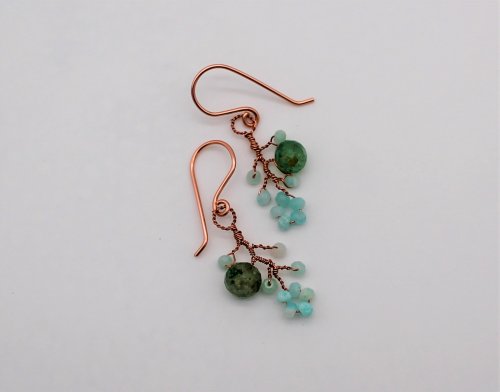
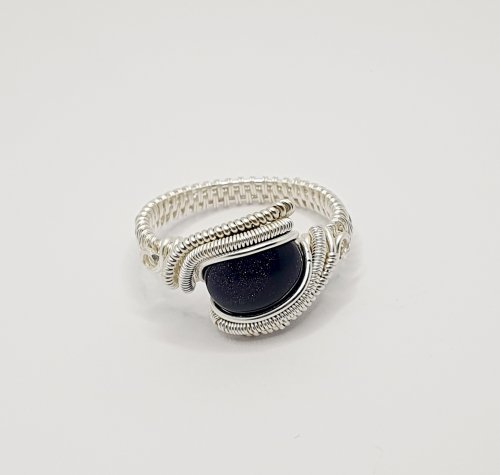
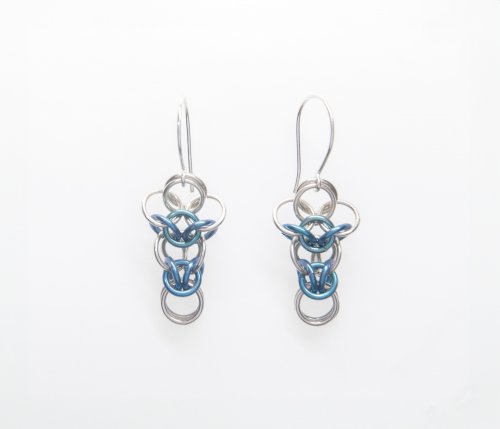

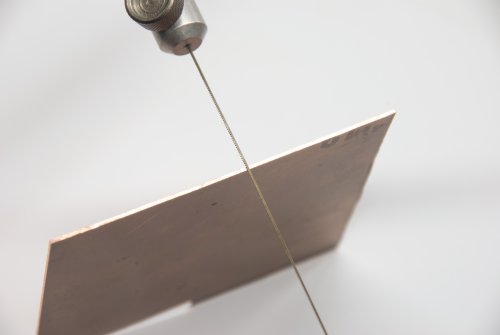
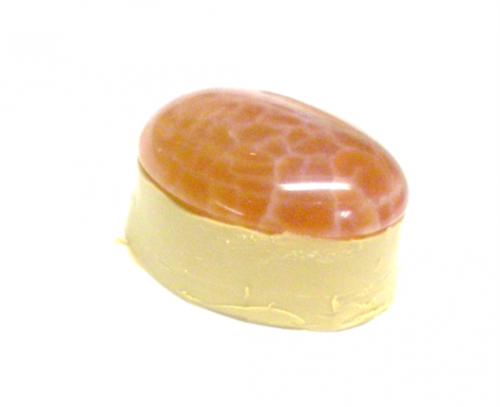
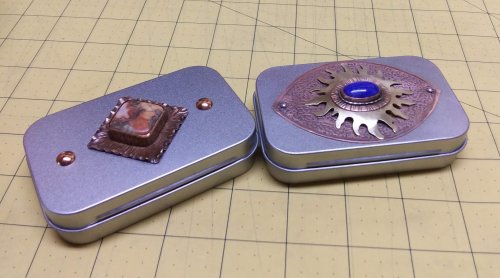
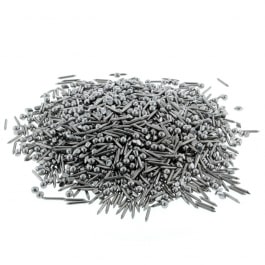





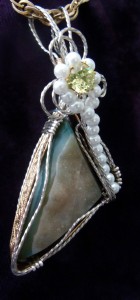

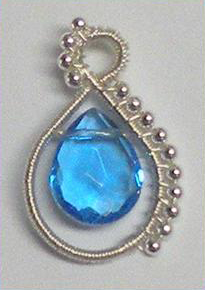 Beaded Briolette Pendant
Beaded Briolette Pendant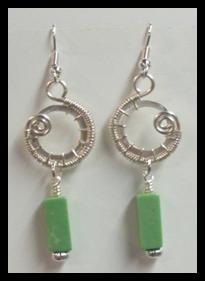 Snail Trail Spiral Earrings
Snail Trail Spiral Earrings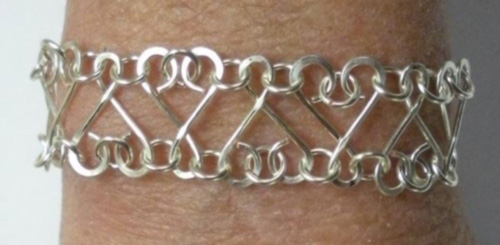 Heart Link Bracelet and Earrings
Heart Link Bracelet and Earrings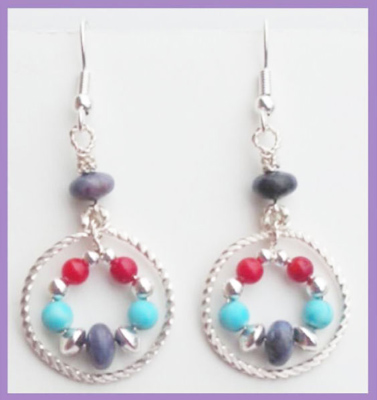 Crazy Hoop Earrings
Crazy Hoop Earrings Double Delight Jade Bracelet
Double Delight Jade Bracelet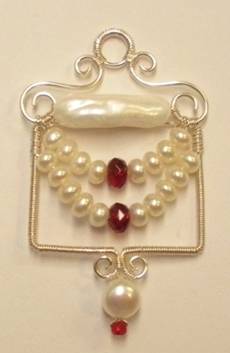 Swagged Pearl Pendant
Swagged Pearl Pendant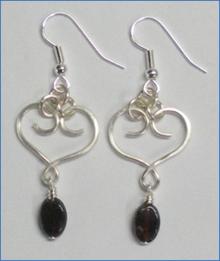 Heart Earrings with Drops
Heart Earrings with Drops Scarab Bracelet
Scarab Bracelet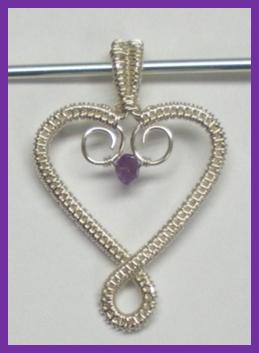 Birthstone Heart Pendant
Birthstone Heart Pendant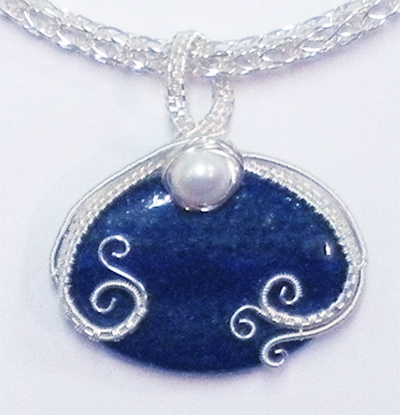 Pearl of the Sea Woven Pendant
Pearl of the Sea Woven Pendant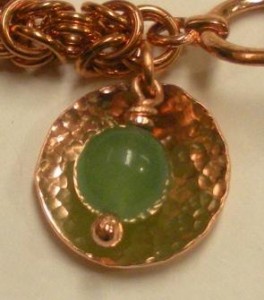 Bead Charm
Bead Charm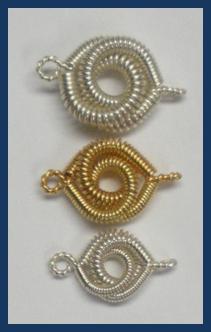 Coiled Rosette Link
Coiled Rosette Link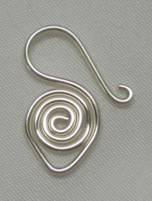 Wire Jewelry Component and Swan Hook
Wire Jewelry Component and Swan Hook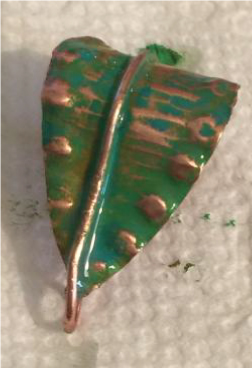 Leaf Bail
Leaf Bail 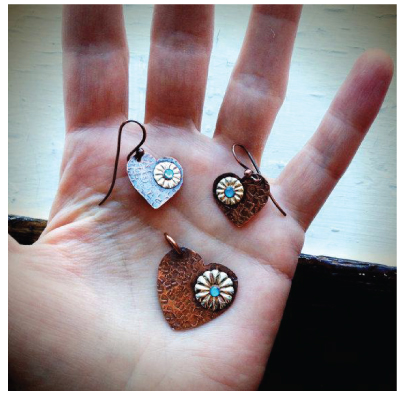 Component Templates with Heart Earrings and Pendant
Component Templates with Heart Earrings and Pendant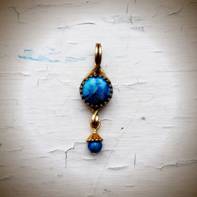 Ring Pendant
Ring Pendant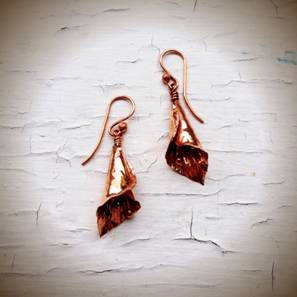 Calla Lily Earrings
Calla Lily Earrings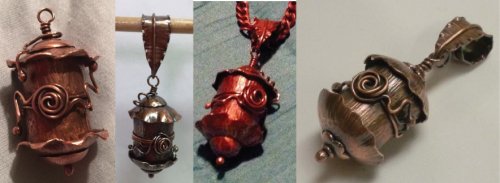 Birdhouse Pendant
Birdhouse Pendant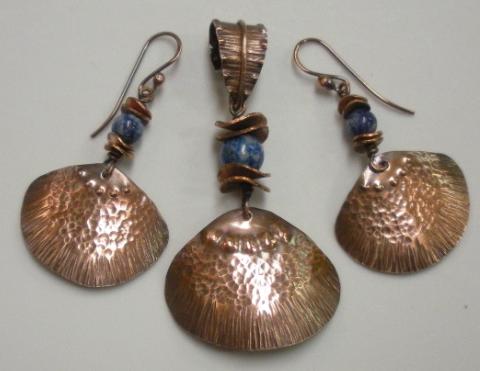 Clamshell Earrings and Pendant
Clamshell Earrings and Pendant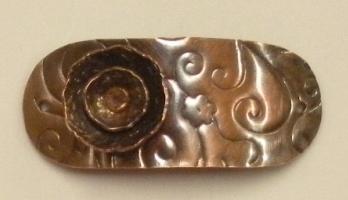 Bracelet Component
Bracelet Component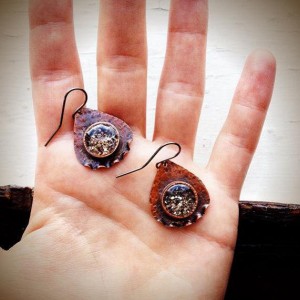 Teardrop Earrings and Pendant
Teardrop Earrings and Pendant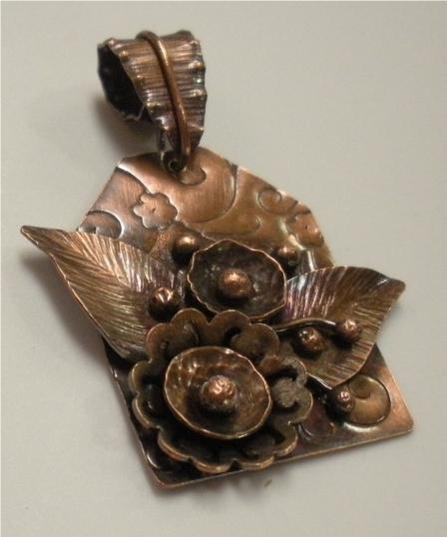 Tab Style Pendant
Tab Style Pendant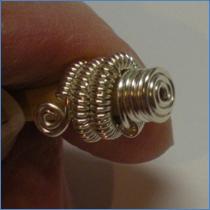 Coiled End Caps
Coiled End Caps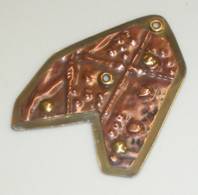 Freeform Pendant
Freeform Pendant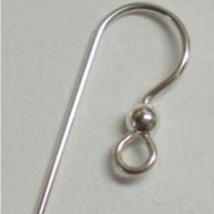 French Hook Ear Wires
French Hook Ear Wires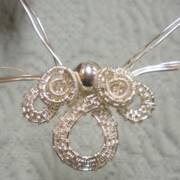 Necklace Component
Necklace Component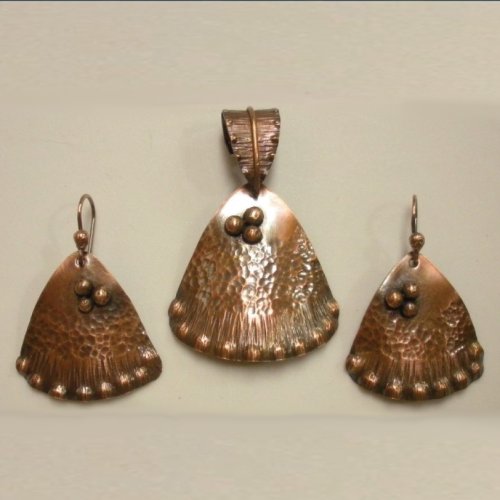 Triangle Shield Earrings, Pendant and Bail
Triangle Shield Earrings, Pendant and Bail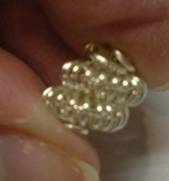 How to Make a Wire Coil and Bead
How to Make a Wire Coil and Bead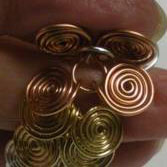 Egyptian Coil Bracelet
Egyptian Coil Bracelet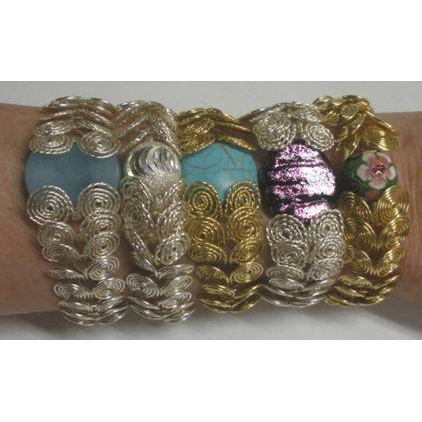 Focal Bead Egyptian Coiled Bracelet
Focal Bead Egyptian Coiled Bracelet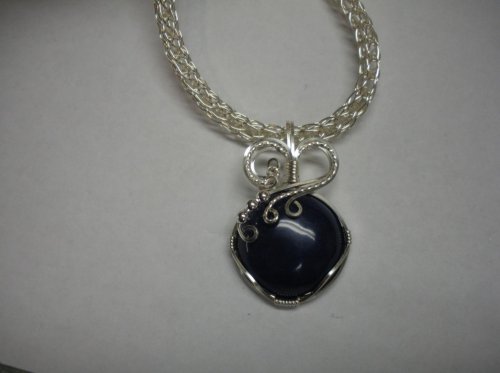 Sweetheart Round Cabochon Pendant
Sweetheart Round Cabochon Pendant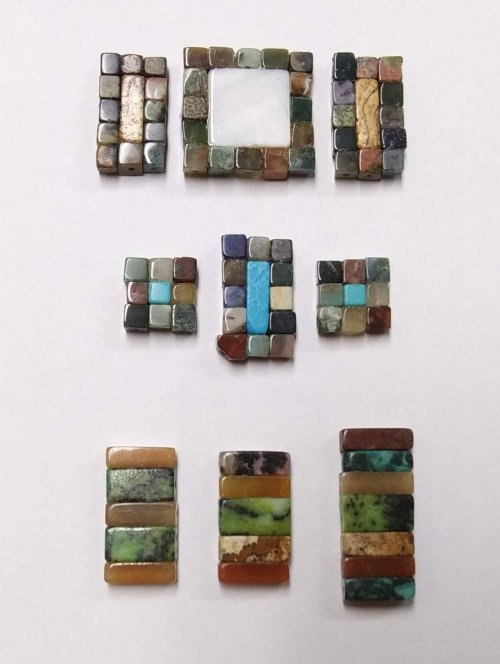 Making Cobblestone Cabochons
Making Cobblestone Cabochons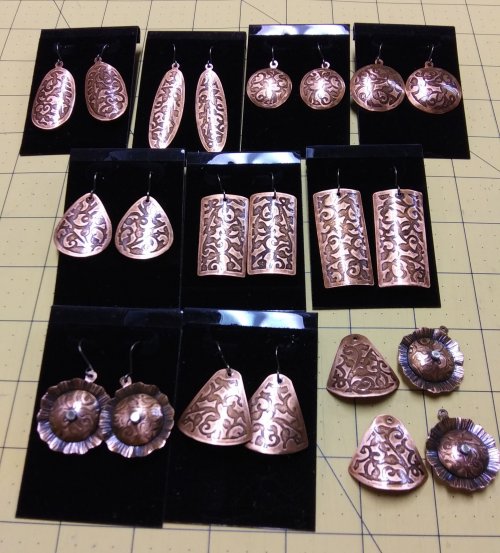 Cupcake Wrapper Earrings
Cupcake Wrapper Earrings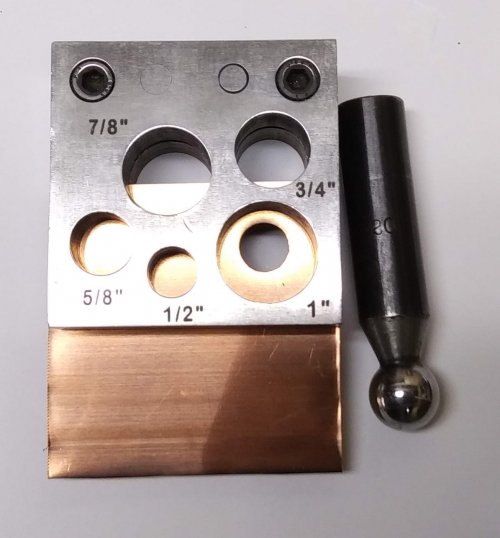 How to Make Metal Washers
How to Make Metal Washers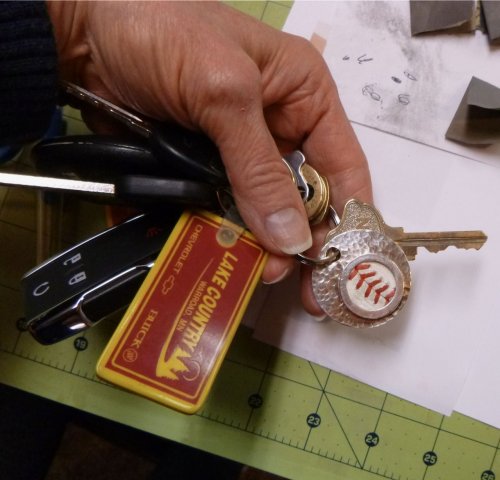 Baseball Skin Keychain
Baseball Skin Keychain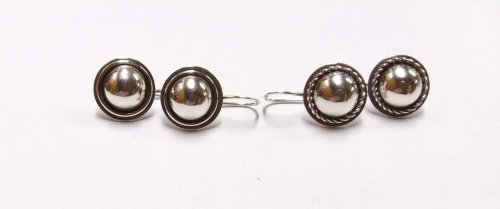 Pat's Silver Domed Earrings
Pat's Silver Domed Earrings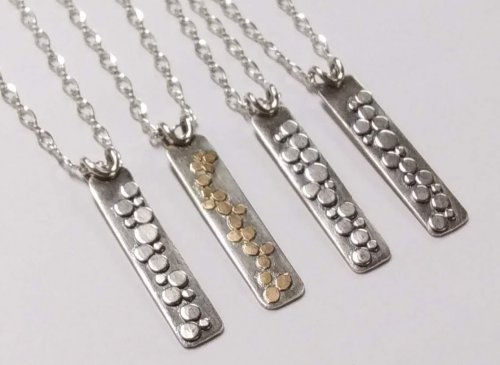 Blaze Your Own Path Pendant
Blaze Your Own Path Pendant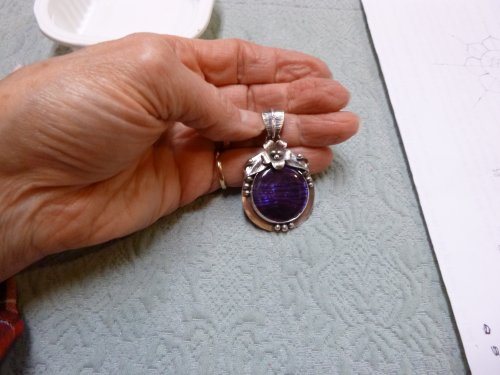 Semi Snap-on Bail
Semi Snap-on Bail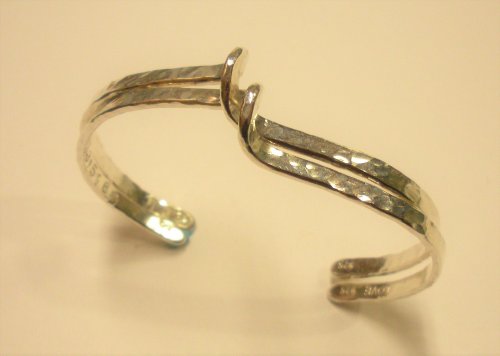 Interlocking Faux Twist Wire Bracelet
Interlocking Faux Twist Wire Bracelet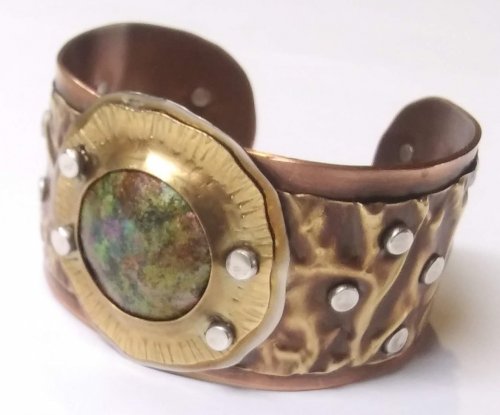 Fold Formed Cuff With Faux Roman Glass or Coin Cabochon
Fold Formed Cuff With Faux Roman Glass or Coin Cabochon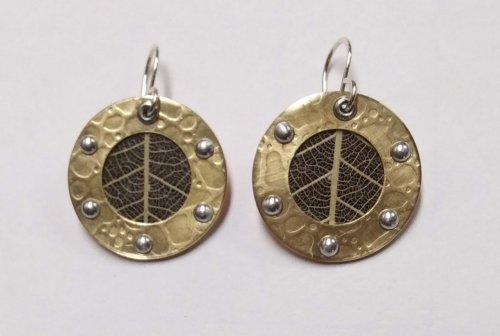 Steampunk Style Leaf Earrings
Steampunk Style Leaf Earrings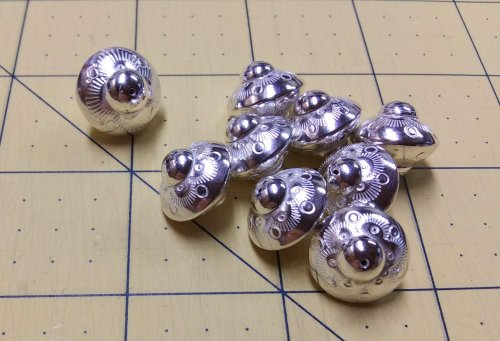 Stamped Saucer Beads
Stamped Saucer Beads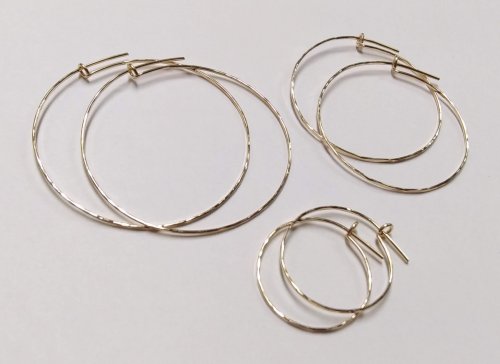 Kat's Wire Hoop Earrings
Kat's Wire Hoop Earrings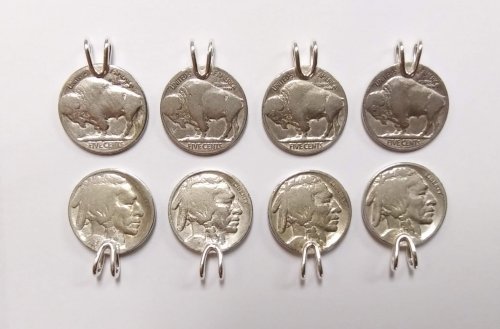 Simple Bail on a Coin Pendant
Simple Bail on a Coin Pendant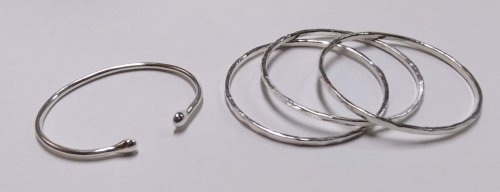 Wire Bangles
Wire Bangles Rolling Mill - or not - Cuff Bracelet
Rolling Mill - or not - Cuff Bracelet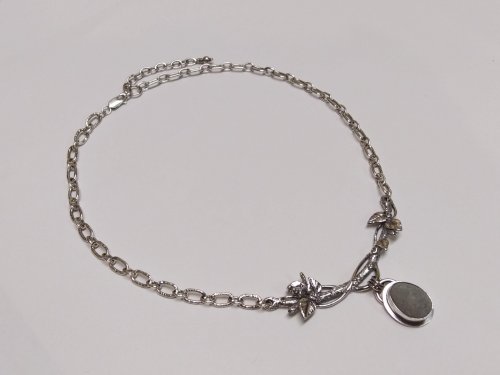 Jen's Chain
Jen's Chain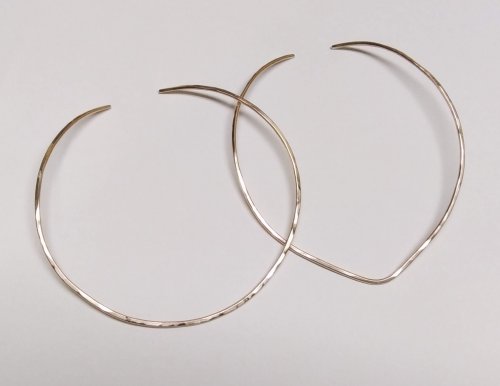 Making Neckwires
Making Neckwires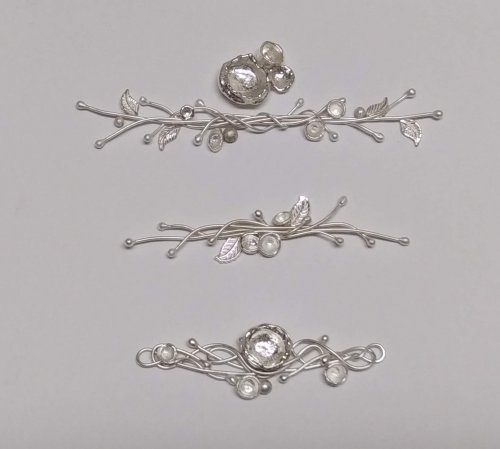 Silver Scrap Wire Focals to Embellish
Silver Scrap Wire Focals to Embellish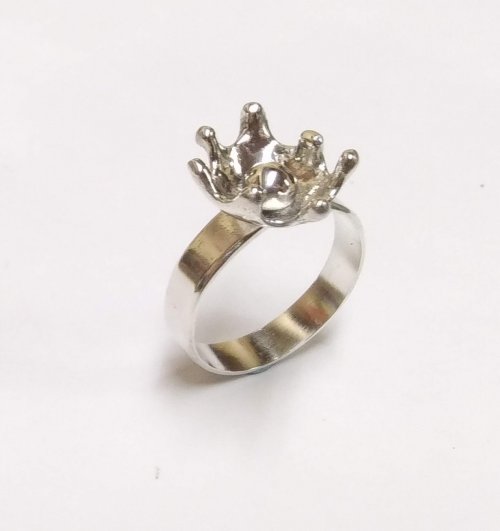 Splash Ring
Splash Ring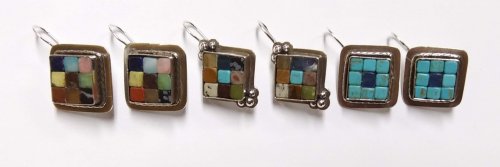 Cobblestone Cab Earrings
Cobblestone Cab Earrings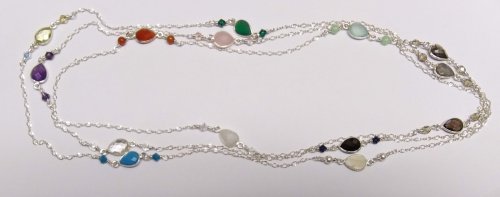 Multi Gemstone Necklace
Multi Gemstone Necklace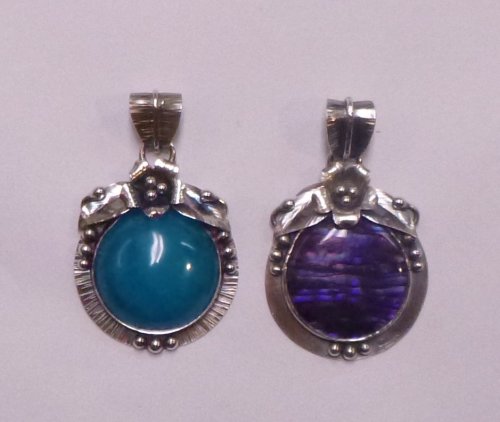 Southwest Style Pendant
Southwest Style Pendant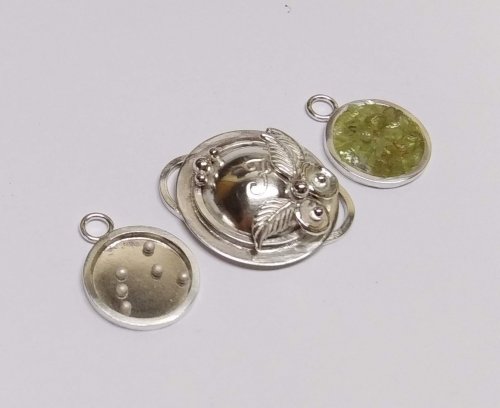 Bezels Using Square Wire
Bezels Using Square Wire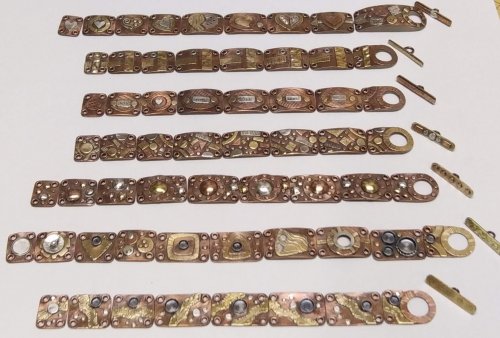 Mixed Metal Sampler Bracelet 1
Mixed Metal Sampler Bracelet 1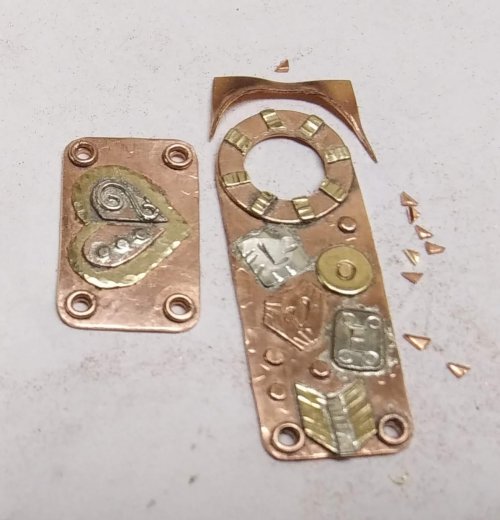 Mixed Metal Sampler Bracelet 2
Mixed Metal Sampler Bracelet 2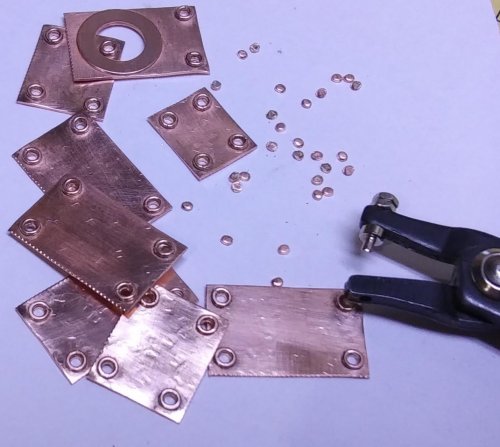 Mixed Metal Sampler Bracelet 3
Mixed Metal Sampler Bracelet 3 Mixed Metal Sampler Bracelet 4 - Words Matter
Mixed Metal Sampler Bracelet 4 - Words Matter Mixed Metal Sampler Bracelet 5 - River Walk
Mixed Metal Sampler Bracelet 5 - River Walk  Mixed Metal Sampler Bracelet 6 - A Little Bling
Mixed Metal Sampler Bracelet 6 - A Little Bling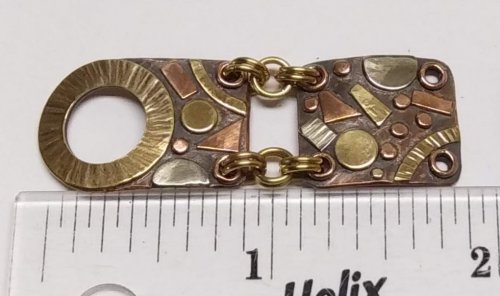 Mixed Metal Sampler Bracelets Series PUTTING IT ALL TOGETHER
Mixed Metal Sampler Bracelets Series PUTTING IT ALL TOGETHER  Mixed Metal Sampler Bracelet 7 - Steampunk Space Oddity
Mixed Metal Sampler Bracelet 7 - Steampunk Space Oddity Mixed Metal Sampler Bracelet 8 - Fun Shapes
Mixed Metal Sampler Bracelet 8 - Fun Shapes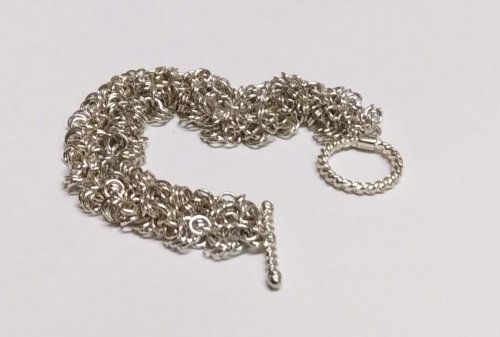 Jump Ring Fringe Bracelet
Jump Ring Fringe Bracelet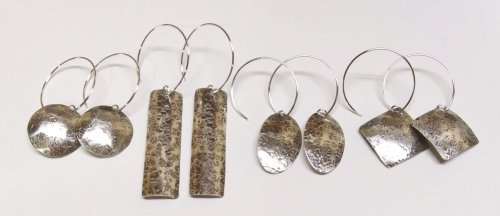 Easy Artisan Earrings
Easy Artisan Earrings Making Chain with Wubbers and Wire
Making Chain with Wubbers and Wire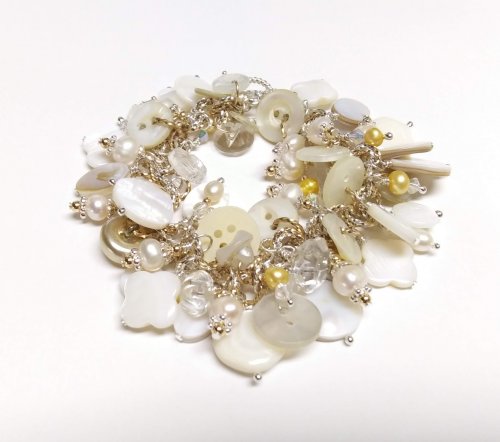 Heirloom Buttons and Beads Bracelet
Heirloom Buttons and Beads Bracelet  Tiny Silver Charms part 1
Tiny Silver Charms part 1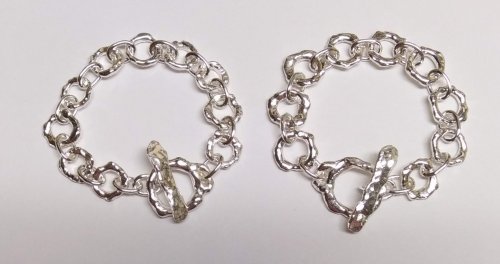 Argentium Silver Scrap Chain
Argentium Silver Scrap Chain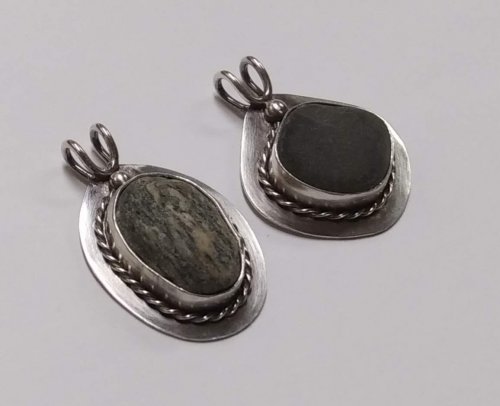 Sterling Lake Stone Pendant with Twisted Wire
Sterling Lake Stone Pendant with Twisted Wire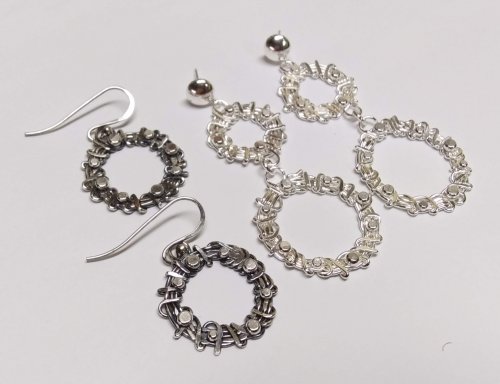 Smashing Drop Earrings
Smashing Drop Earrings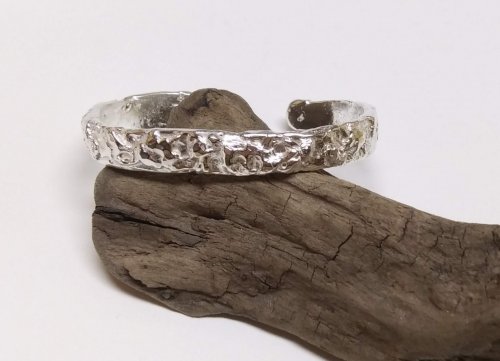 Argentium Silver Scrap Nugget Cuff
Argentium Silver Scrap Nugget Cuff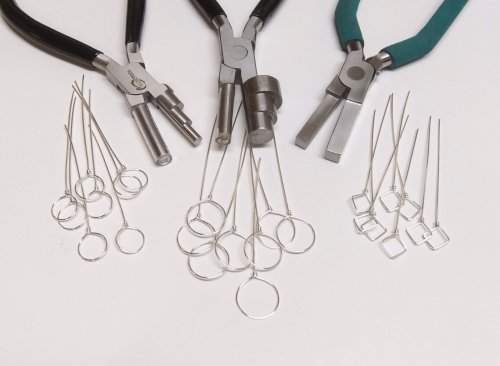 Finish Them Your Way Earrings
Finish Them Your Way Earrings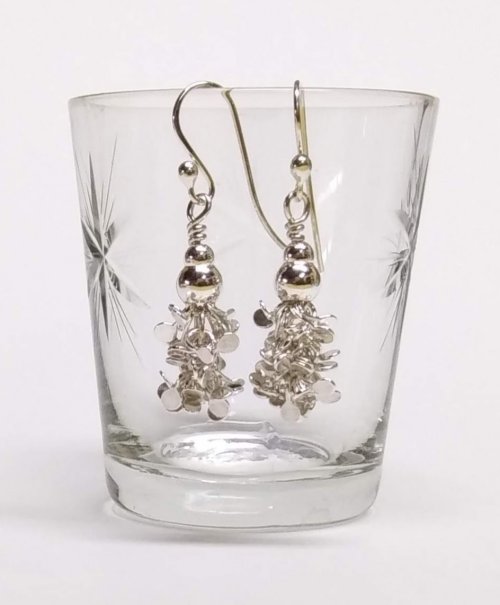 Paddle Fringe Earrings
Paddle Fringe Earrings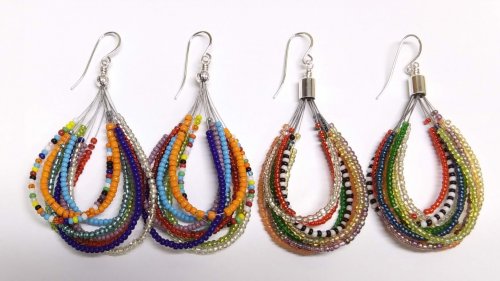 Seed Bead Earrings
Seed Bead Earrings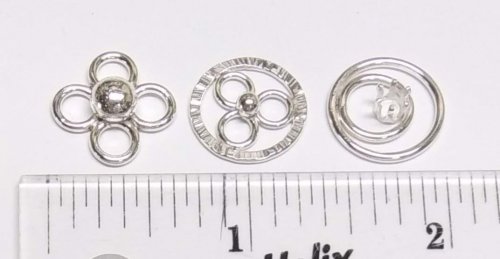 Bracelet Links 1, 2,3
Bracelet Links 1, 2,3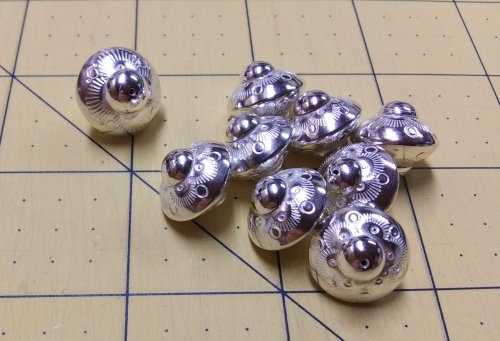 Stamped Saucer Beads
Stamped Saucer Beads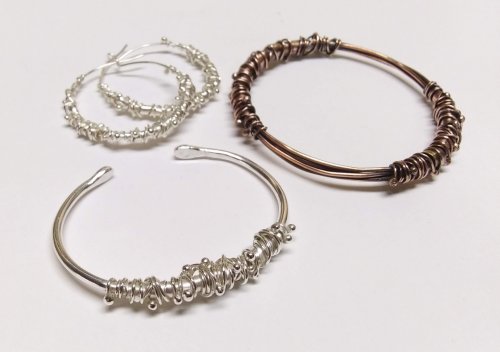 Chaos Scrap Wrap Jewelry
Chaos Scrap Wrap Jewelry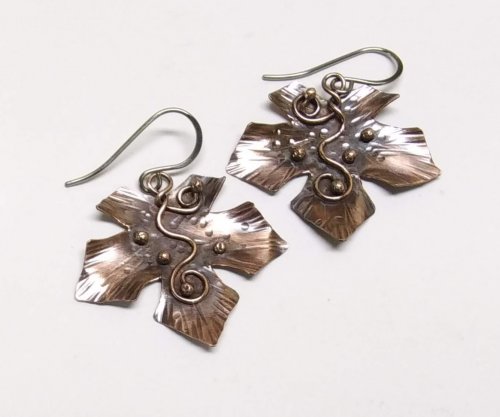 Maple Leaf Earrings
Maple Leaf Earrings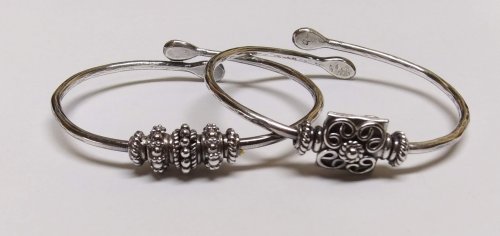 Child's Bracelet That Grows with Them
Child's Bracelet That Grows with Them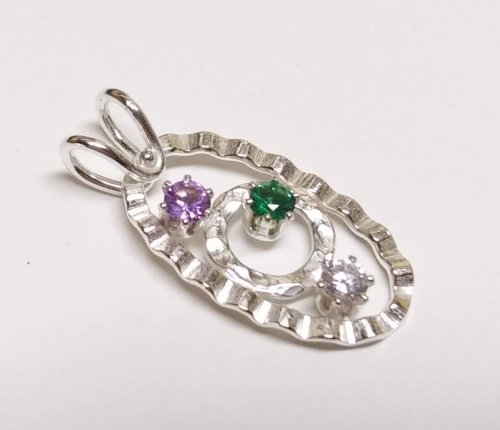 Mike's Surpirise Claire's Ripple Pendant
Mike's Surpirise Claire's Ripple Pendant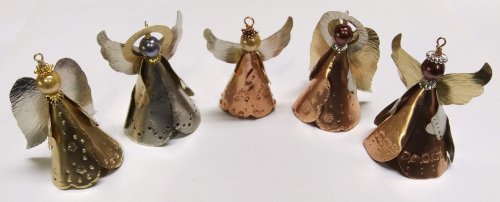 Angel Ornament
Angel Ornament 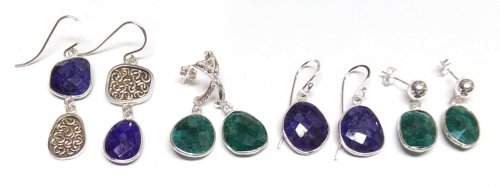 Diamonds, Emeralds, and Sapphires, Oh My.
Diamonds, Emeralds, and Sapphires, Oh My. 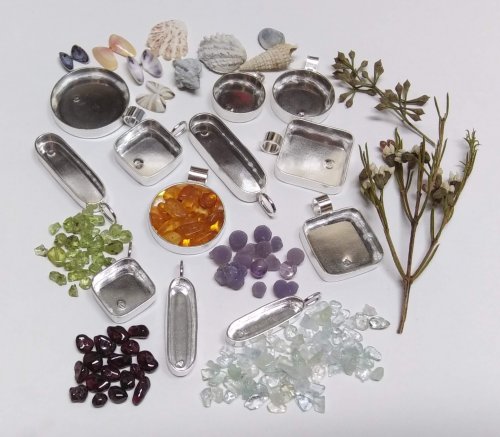 Treasure Bezel Cups
Treasure Bezel Cups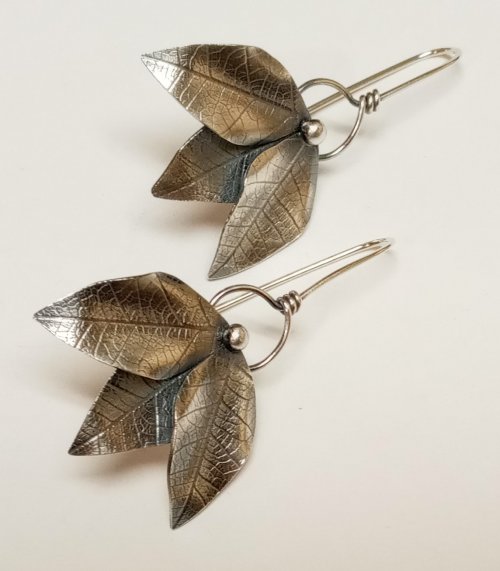 Three Leaves Earrings
Three Leaves Earrings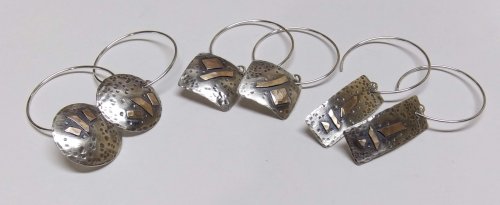 Silver and Gold Earrings
Silver and Gold Earrings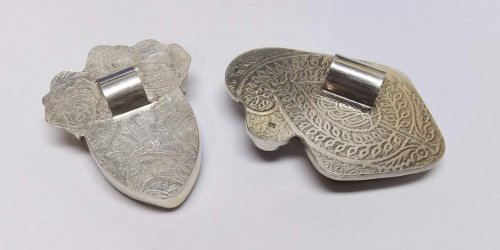 Make a Hidden Bail
Make a Hidden Bail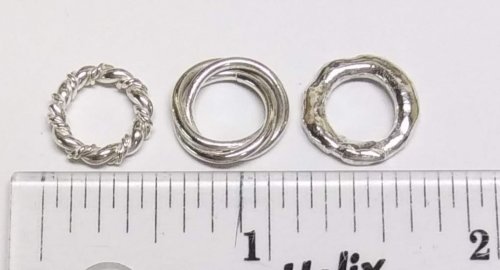 Wire Links 4, 5, 6
Wire Links 4, 5, 6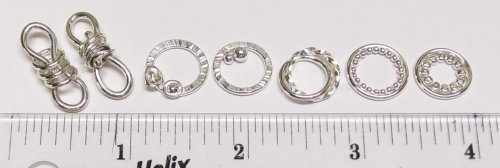 Wire Links 7, 8, 9, and 10
Wire Links 7, 8, 9, and 10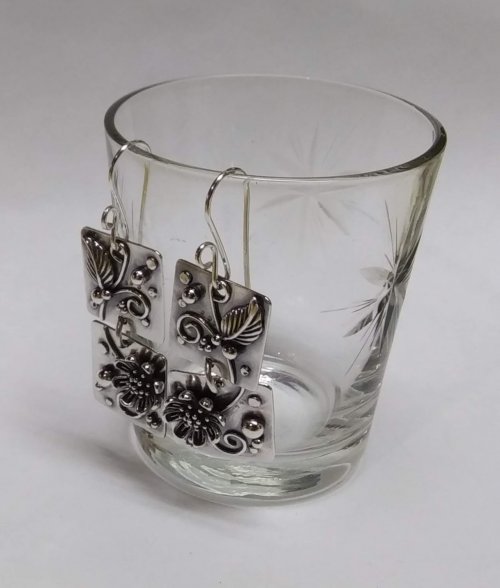 Double Loop Ear Wires
Double Loop Ear Wires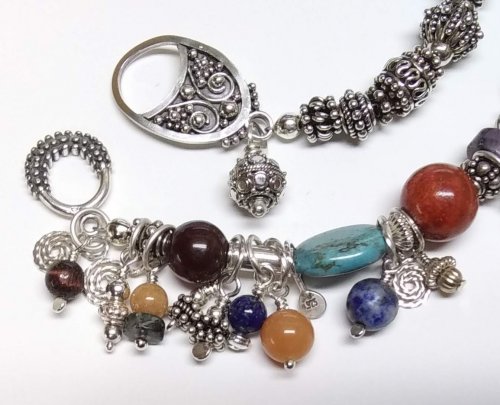 Balled and Paddled Head Pins
Balled and Paddled Head Pins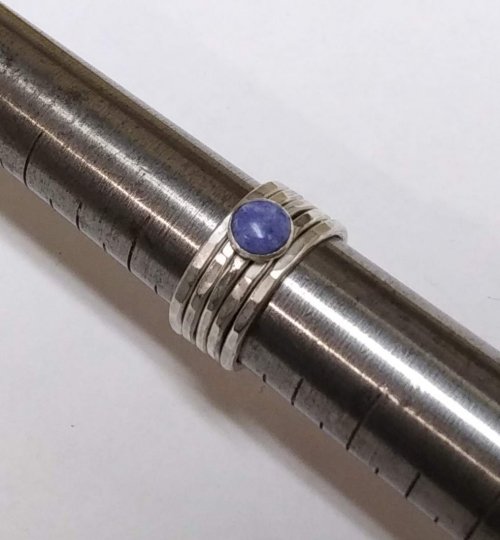 Textured Stacked Rings
Textured Stacked Rings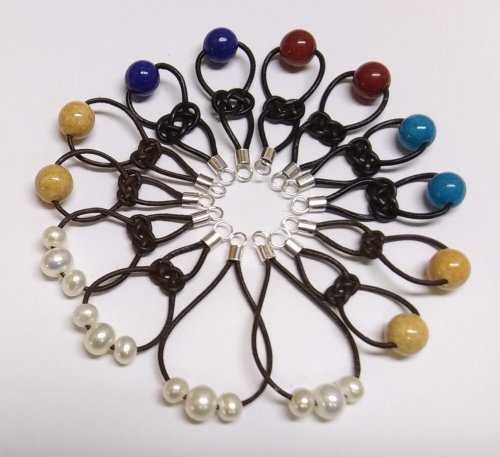 Cord and Bead Earrings
Cord and Bead Earrings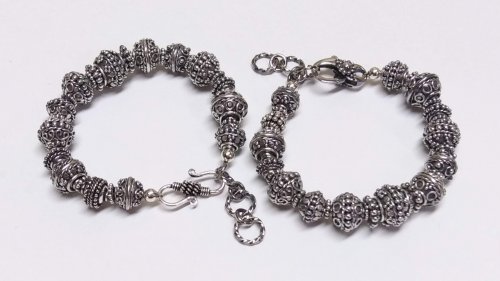 Bali Style Adjustable Closures
Bali Style Adjustable Closures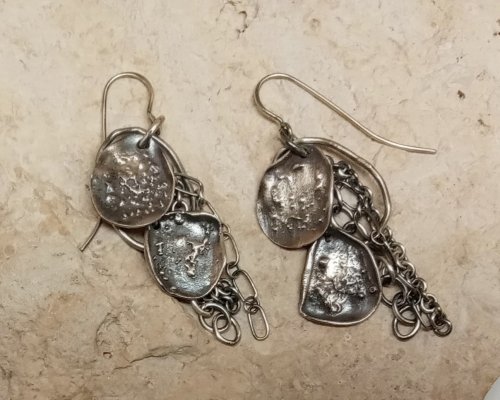 Organic Fused Silver Dust Earrings
Organic Fused Silver Dust Earrings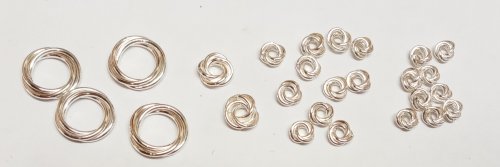 Mobius Rings
Mobius Rings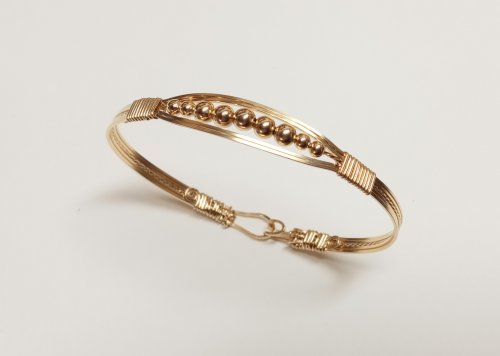 Dainty Bead and Wire Bangle with Hook Closure
Dainty Bead and Wire Bangle with Hook Closure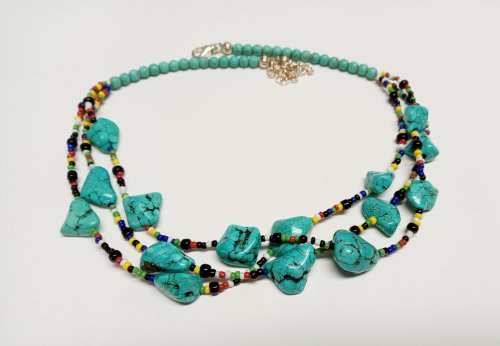 Seed Bead and Nugget Necklace
Seed Bead and Nugget Necklace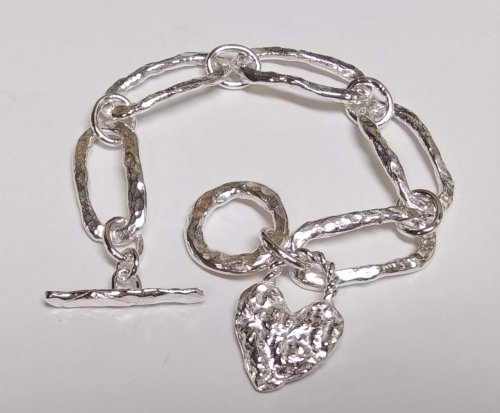 Love Locks Heart Charm
Love Locks Heart Charm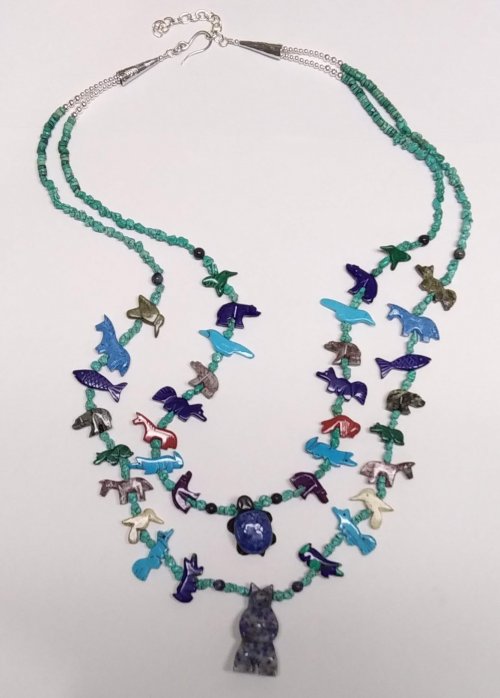 Traditional Southwest Style Hook Closures
Traditional Southwest Style Hook Closures 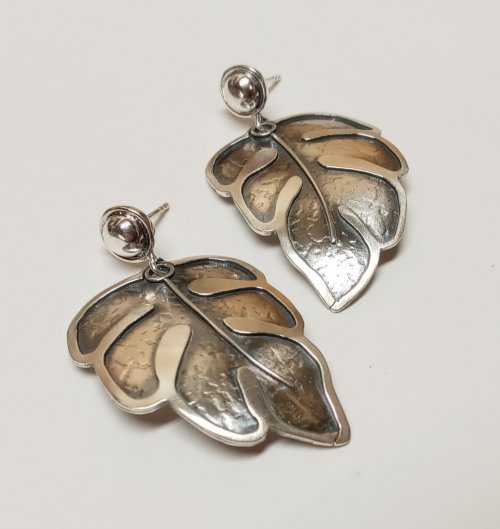 Negative Space Earrings
Negative Space Earrings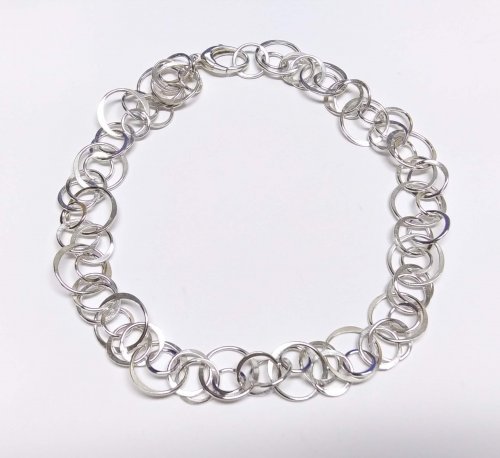 Jumbled Lacy Chain
Jumbled Lacy Chain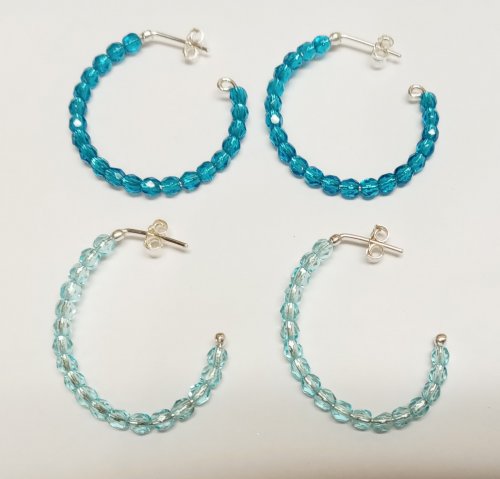 Easy Beaded Post Hoop Earrings
Easy Beaded Post Hoop Earrings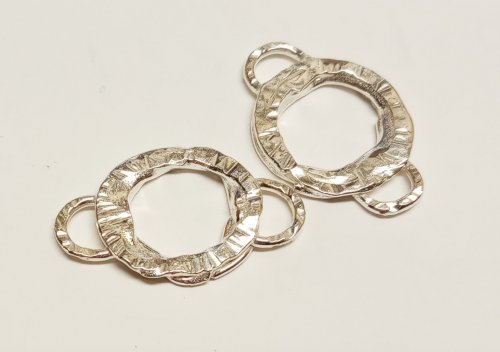 Rustic Silver Links
Rustic Silver Links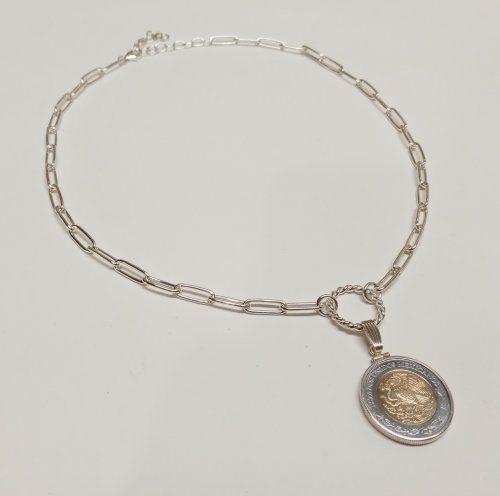 Make a Soldered Paperclip Chain
Make a Soldered Paperclip Chain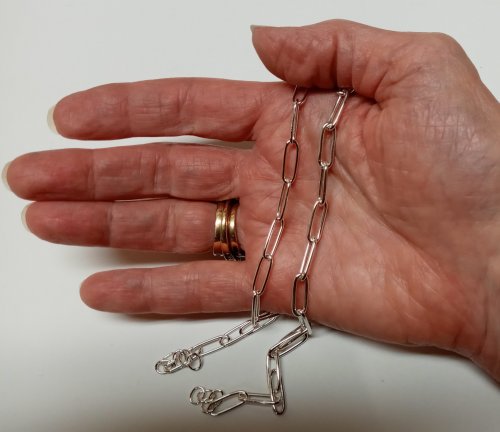 Make a Fused Paperclip Chain
Make a Fused Paperclip Chain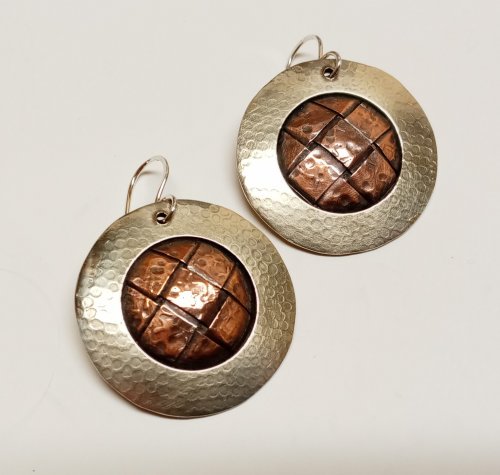 Make Woven Metal Strips to Use in Your Designs
Make Woven Metal Strips to Use in Your Designs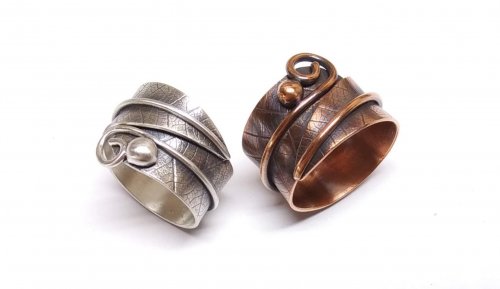 Leaf Wrap Metal Rings version 1
Leaf Wrap Metal Rings version 1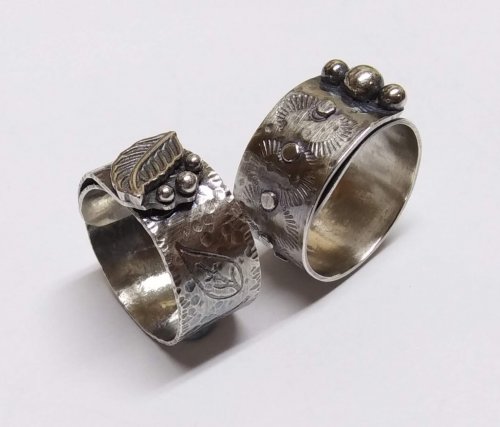 Leaf Wrap Metal Rings version 2
Leaf Wrap Metal Rings version 2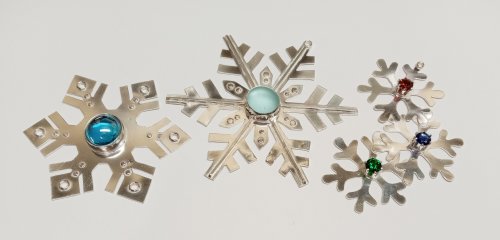 Snowflake Ornaments
Snowflake Ornaments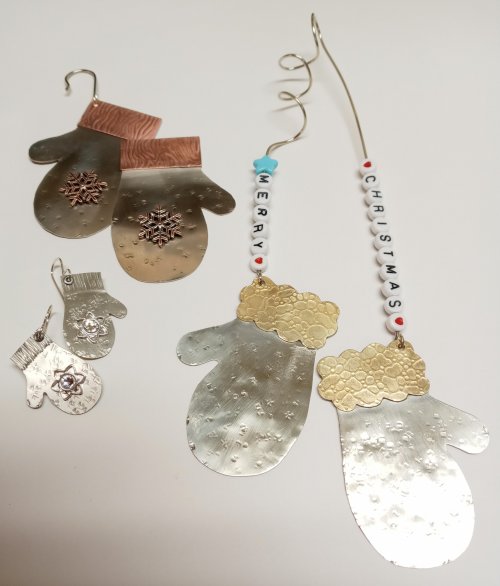 Mitten Ornament
Mitten Ornament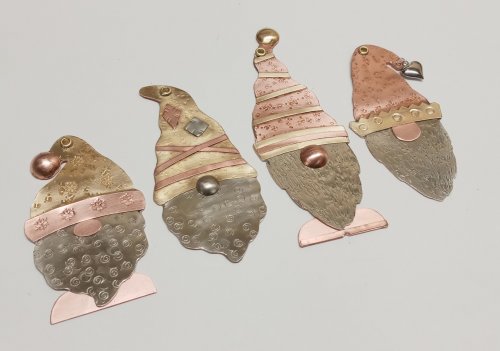 Gnome Ornaments
Gnome Ornaments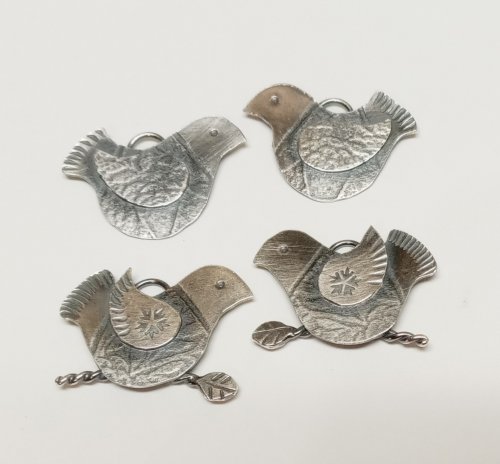 A Partridge in a Pear Tree Earrings
A Partridge in a Pear Tree Earrings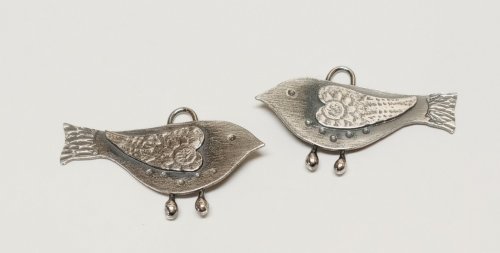 Two Turtle Doves Earrings
Two Turtle Doves Earrings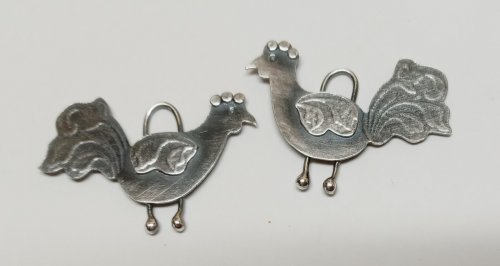 Three French Hens Earrings
Three French Hens Earrings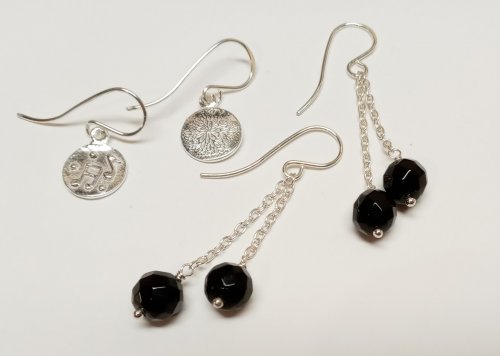 Four Calling Birds Earrings
Four Calling Birds Earrings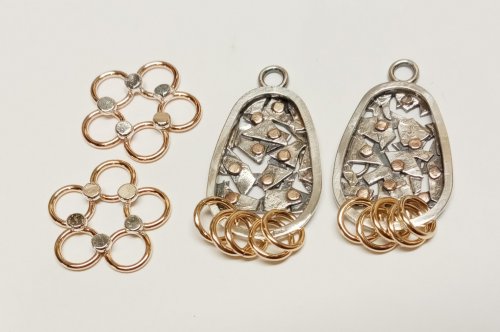 Five Golden Rings Earrings
Five Golden Rings Earrings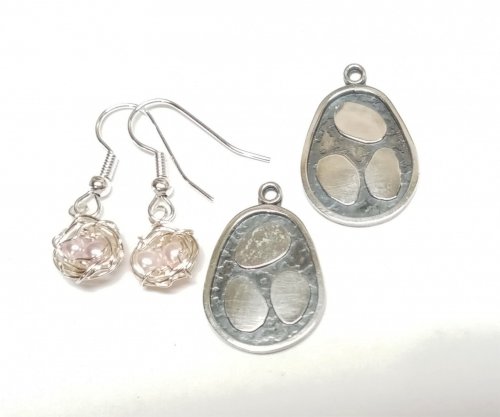 Six Geese a Layin' Earrings
Six Geese a Layin' Earrings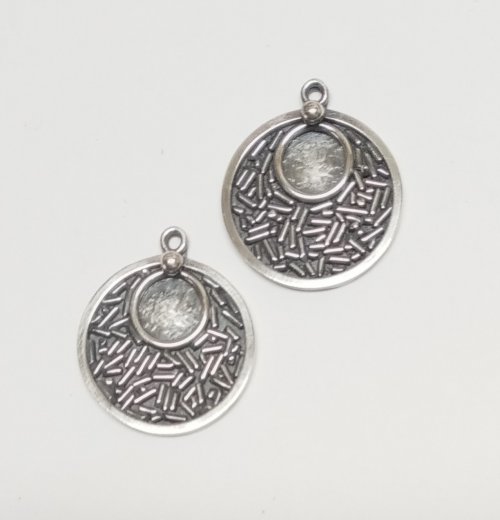 Seven Swans a Swimming Earrings
Seven Swans a Swimming Earrings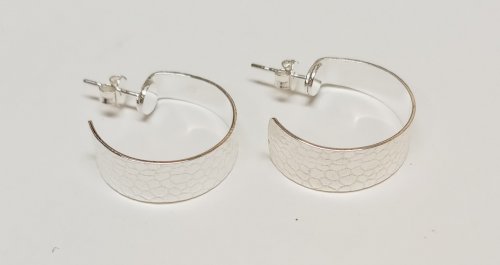 Eight Maids a Milking earrings
Eight Maids a Milking earrings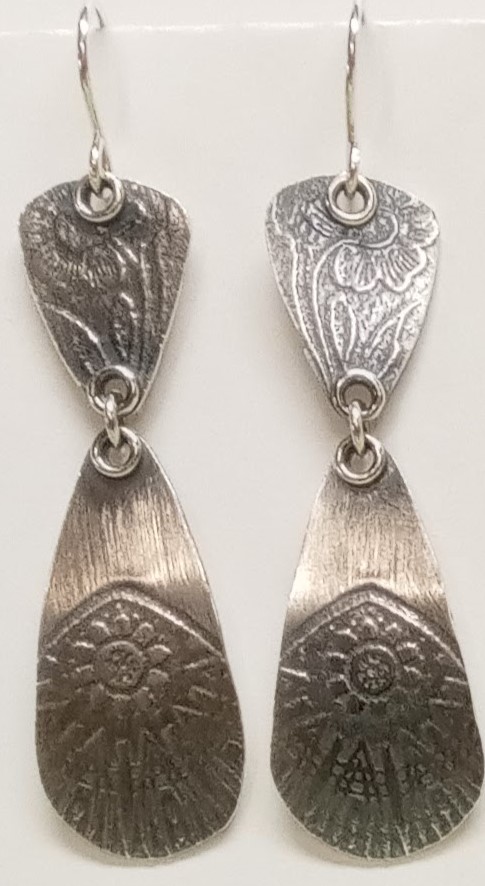 Nine Ladies Dancing Earrings
Nine Ladies Dancing Earrings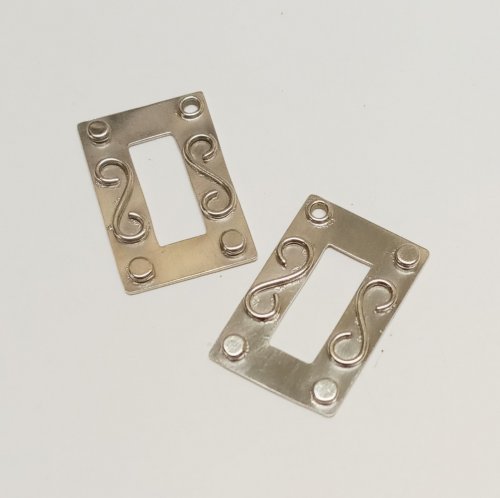 Ten Lords a Leaping Earrings
Ten Lords a Leaping Earrings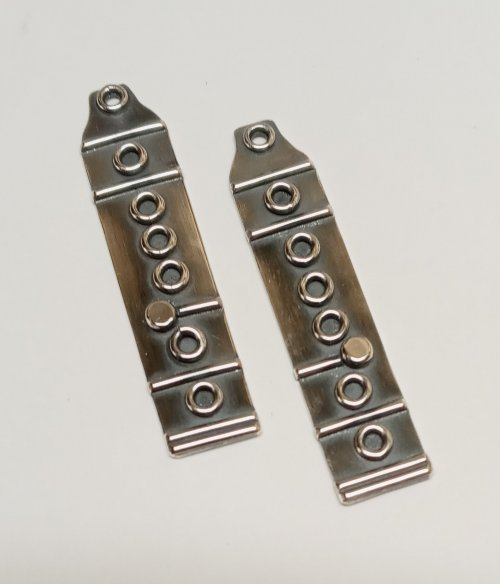 Eleven Pipers Piping Earrings
Eleven Pipers Piping Earrings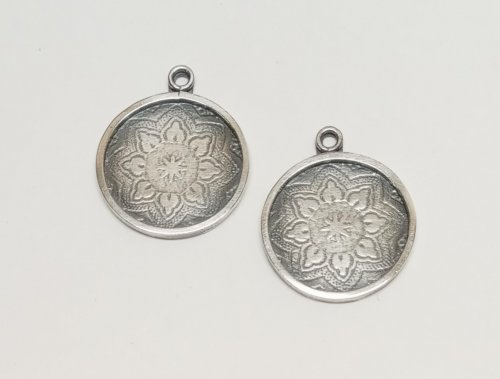 Twelve Drummers Drumming Earrings
Twelve Drummers Drumming Earrings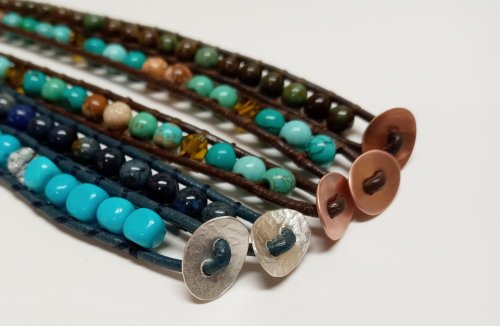 Make Your Own Bracelet Button Clasps
Make Your Own Bracelet Button Clasps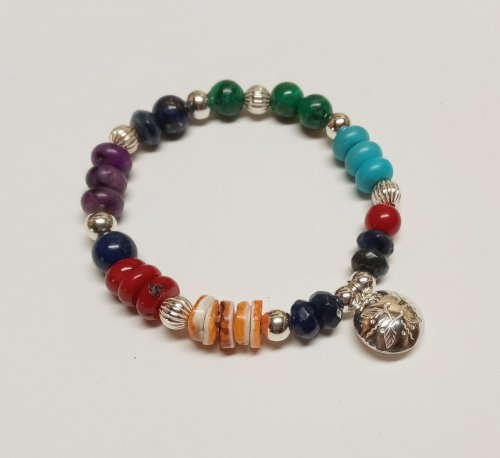 Little Saucer Bells
Little Saucer Bells Doodads - Fun Findings
Doodads - Fun Findings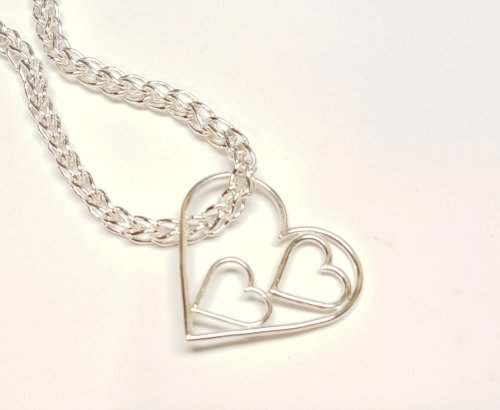 No Measure Hearts, Any Size, Any Gauge
No Measure Hearts, Any Size, Any Gauge 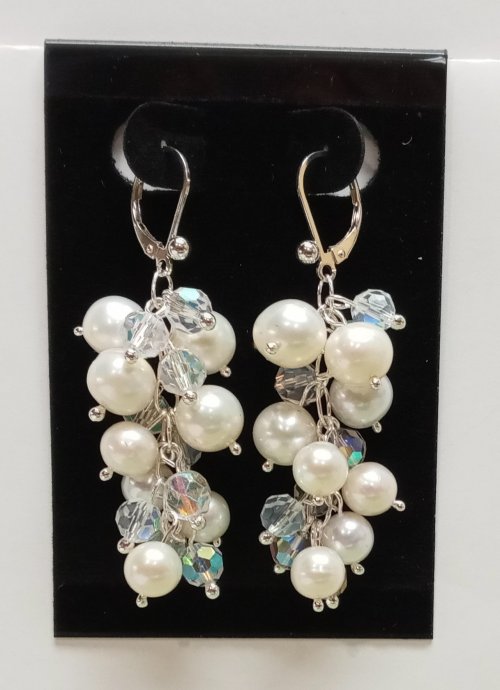 Cascading Drops Earrings
Cascading Drops Earrings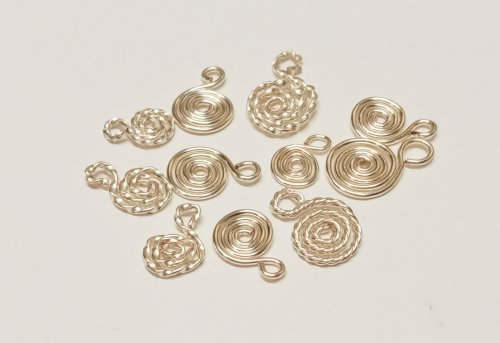 WIre Basics - Spiral Charms
WIre Basics - Spiral Charms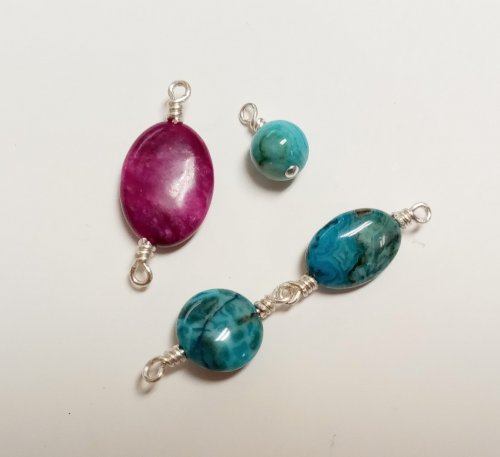 Wire Basics - Wrapped Loops and Links
Wire Basics - Wrapped Loops and Links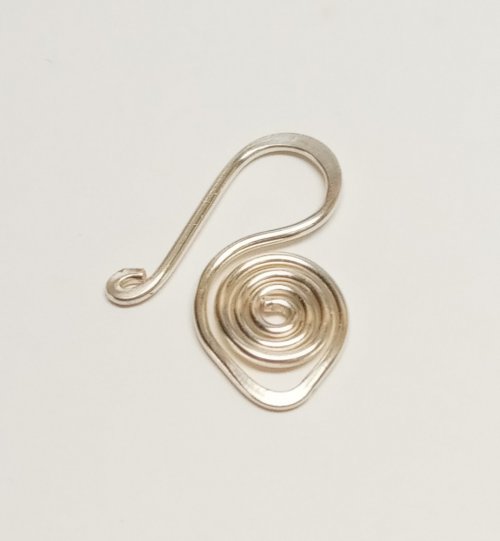 Wire Basics - Simple Swan Hook
Wire Basics - Simple Swan Hook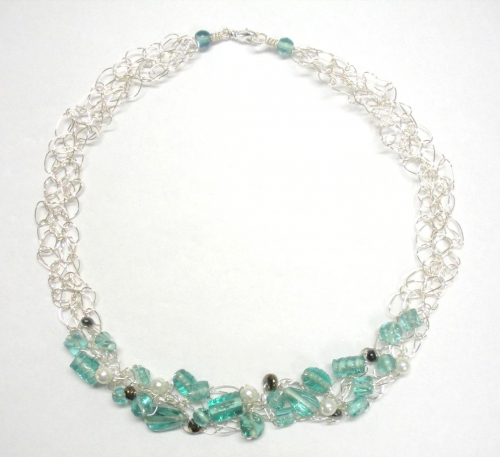 Wire Crocheted Necklace
Wire Crocheted Necklace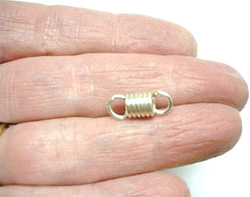 Wire Basics - Wire Garage Door Spring Link
Wire Basics - Wire Garage Door Spring Link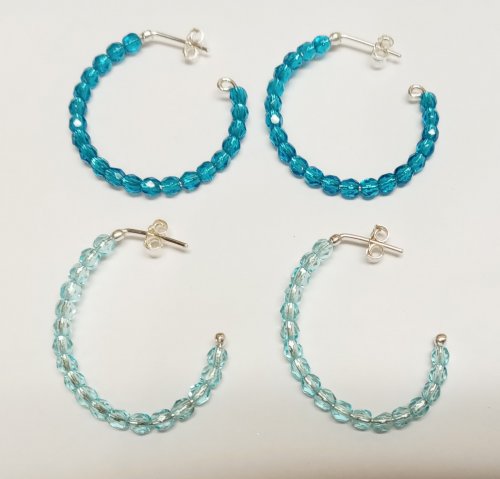 Easy Post Hoop Earrings
Easy Post Hoop Earrings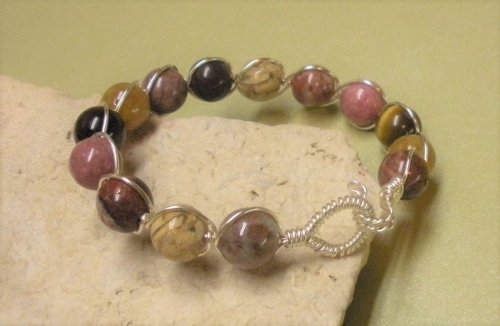 Double Wrap Wire Bangle Bracelet
Double Wrap Wire Bangle Bracelet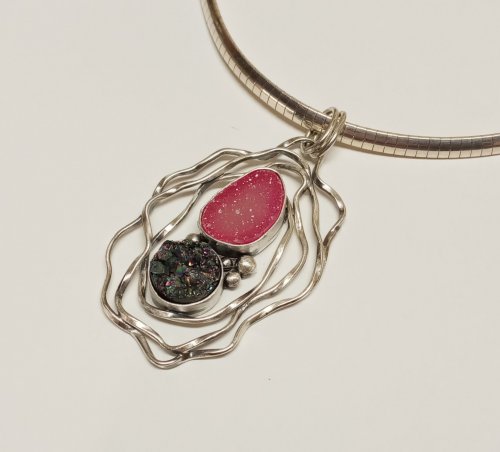 Organic Wire Pendant
Organic Wire Pendant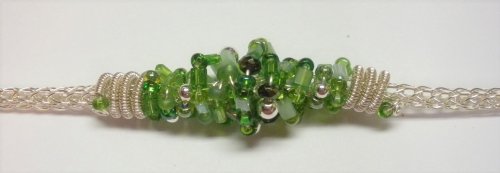 Coiled, Beaded Slide
Coiled, Beaded Slide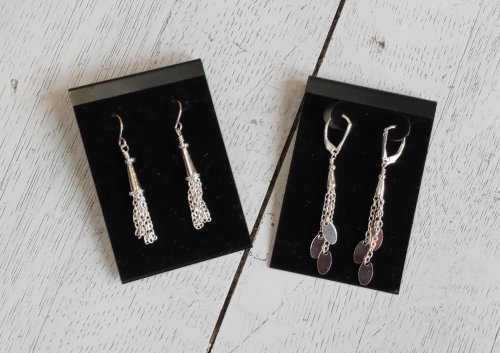 Cone and Chain Earrings
Cone and Chain Earrings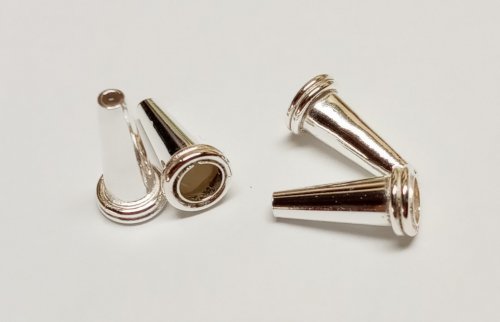 Embellished Sterling Cones
Embellished Sterling Cones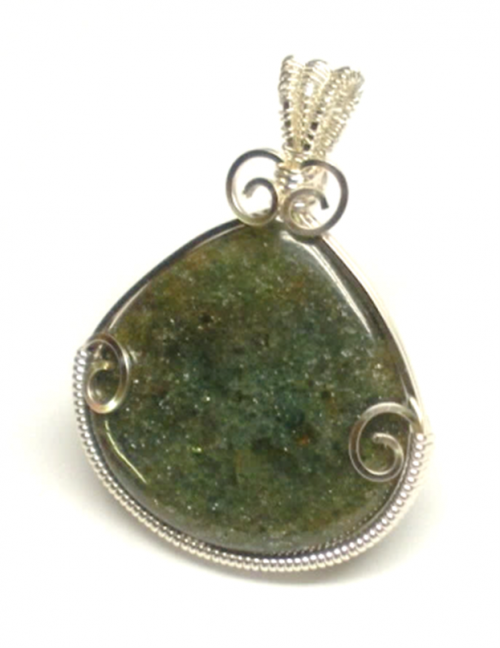 Classic Wire Wrap Bezelled Pendant
Classic Wire Wrap Bezelled Pendant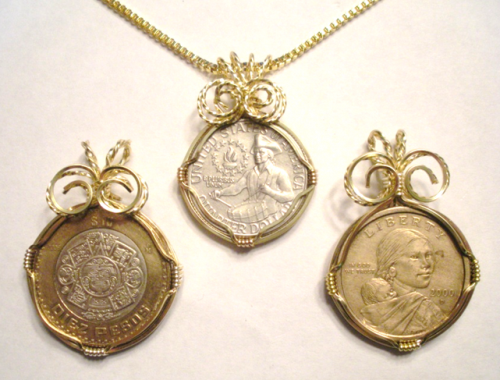 Wire Wrap a Coin
Wire Wrap a Coin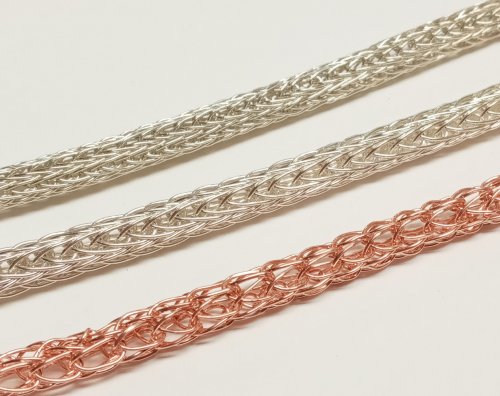 Viking Knit
Viking Knit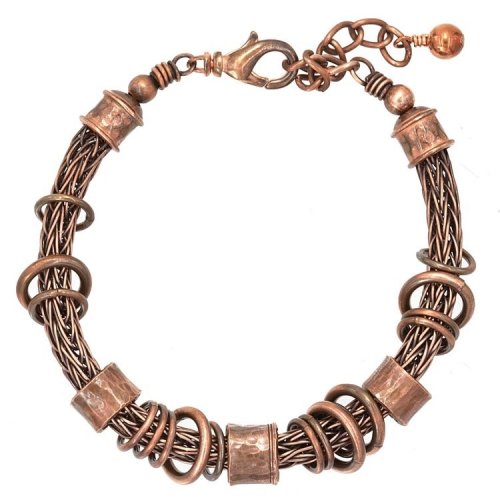 Viking Knit Bracelet
Viking Knit Bracelet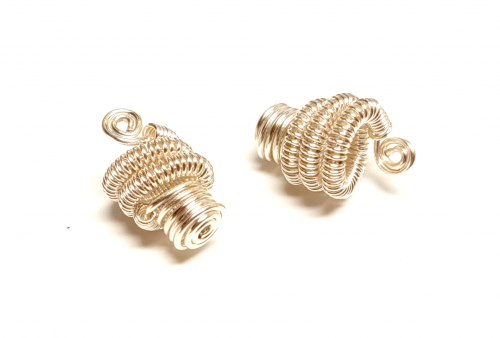 Coiled Wire End Caps
Coiled Wire End Caps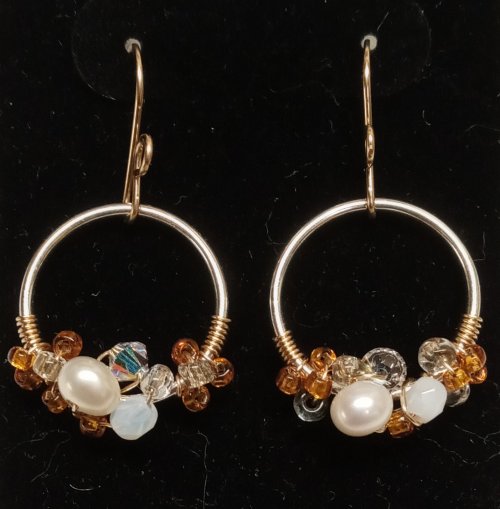 Bead-Wrapped Hoop Earrings
Bead-Wrapped Hoop Earrings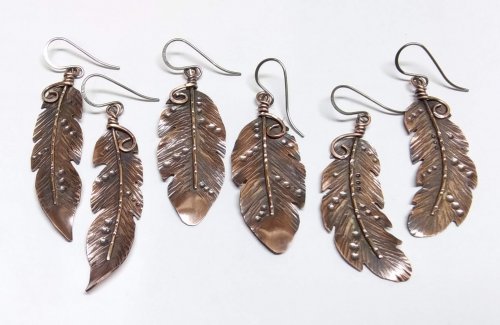 Copper Feather Earrings
Copper Feather Earrings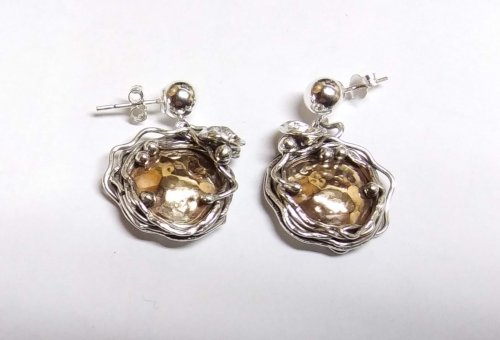 Soldering a Dome to a Backplate
Soldering a Dome to a Backplate 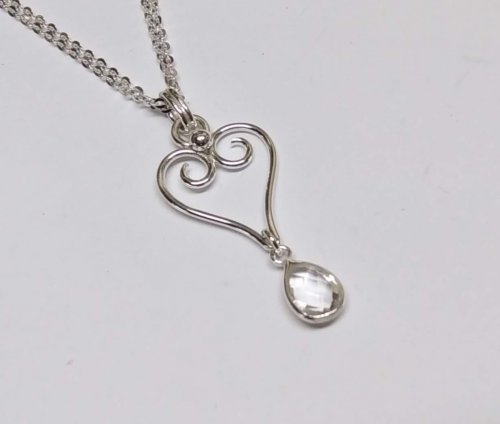 Wire Heart Pendant with Gemstone Drop
Wire Heart Pendant with Gemstone Drop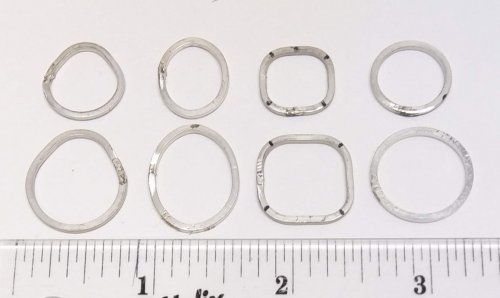 Make Basic Wire Shapes for Jewelry
Make Basic Wire Shapes for Jewelry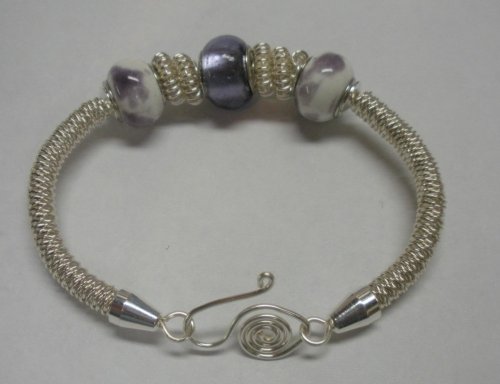 Coiled Bead and Twisted Wire Bracelet
Coiled Bead and Twisted Wire Bracelet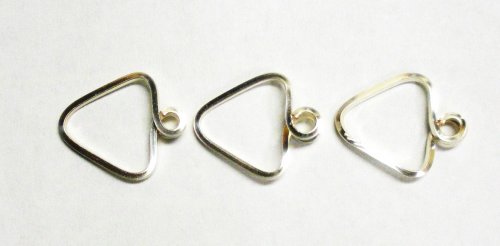 Wire Triangle Link
Wire Triangle Link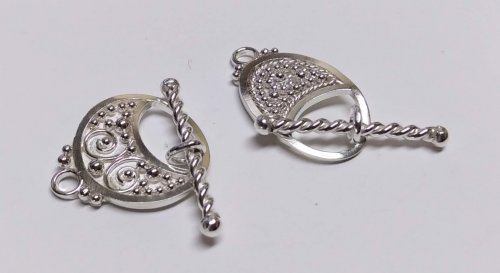 Bali Style Focal Toggle
Bali Style Focal Toggle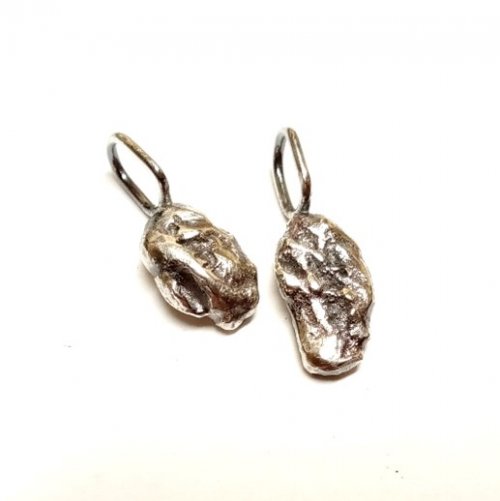 Silver Nuggets
Silver Nuggets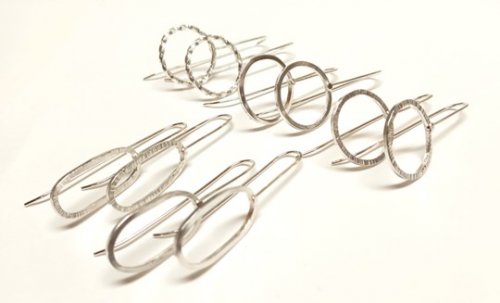 Fun Shapes Fish Hook Earrings
Fun Shapes Fish Hook Earrings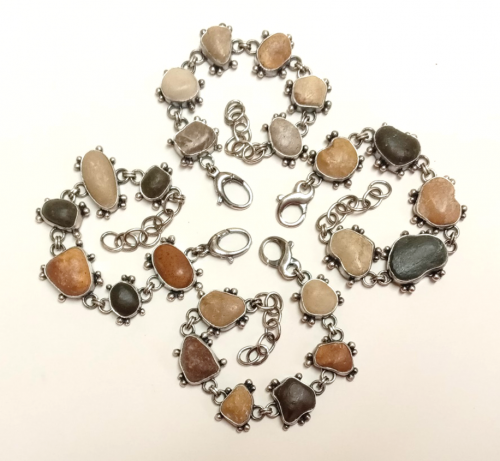 After the Rain Bracelets
After the Rain Bracelets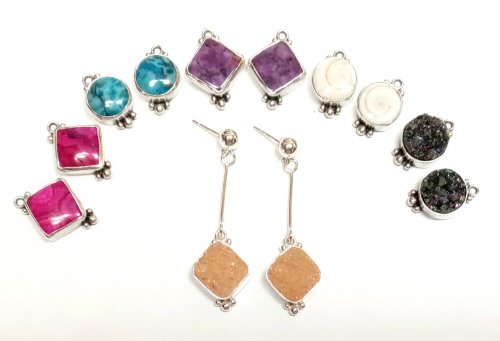 Dangling Drop Earrings
Dangling Drop Earrings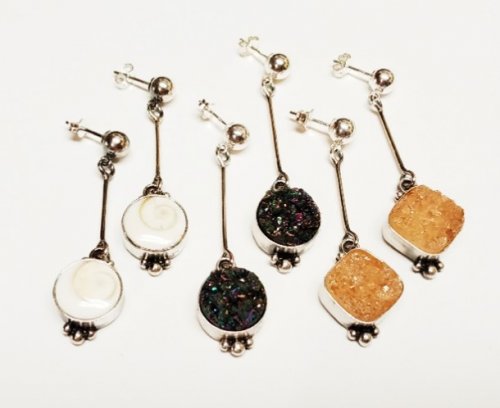 Dangling Chain Sticks
Dangling Chain Sticks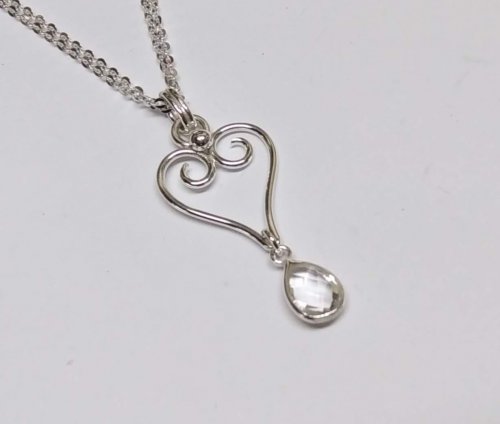 Wire Heart Pendant with Gemstone Drop
Wire Heart Pendant with Gemstone Drop 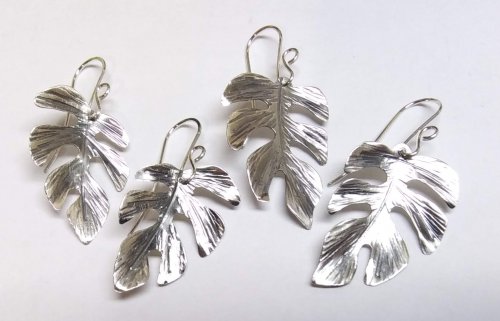 Tropical Leaf Earrings
Tropical Leaf Earrings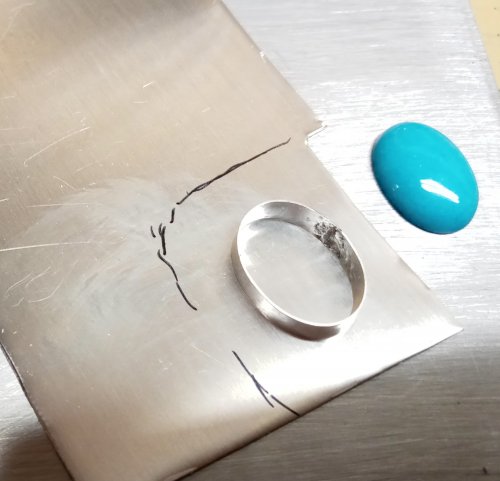 Basic Bezel Wire Tutorial
Basic Bezel Wire Tutorial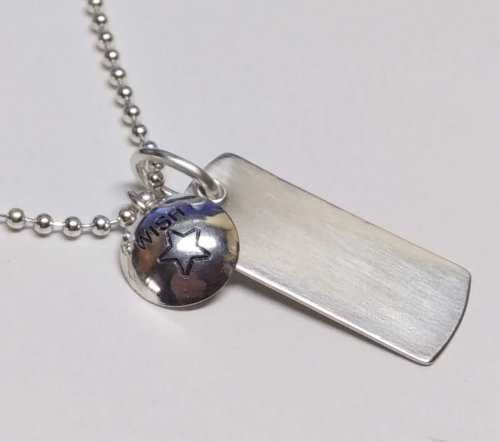 Dog Tag Style Necklace
Dog Tag Style Necklace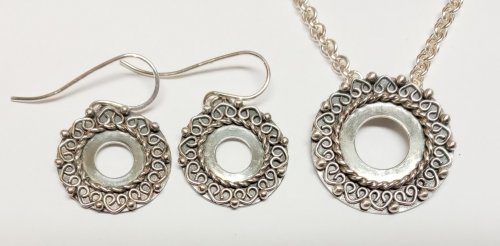 Lacy Washers
Lacy Washers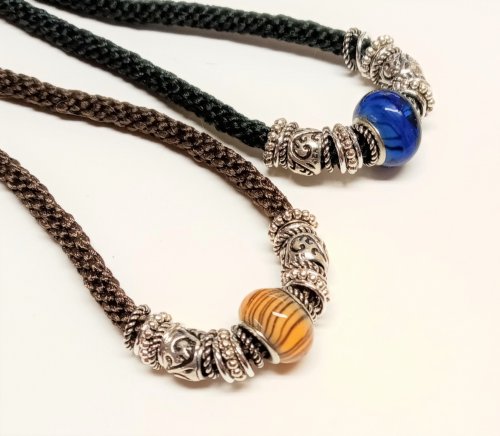 8-Strand Kumihimo
8-Strand Kumihimo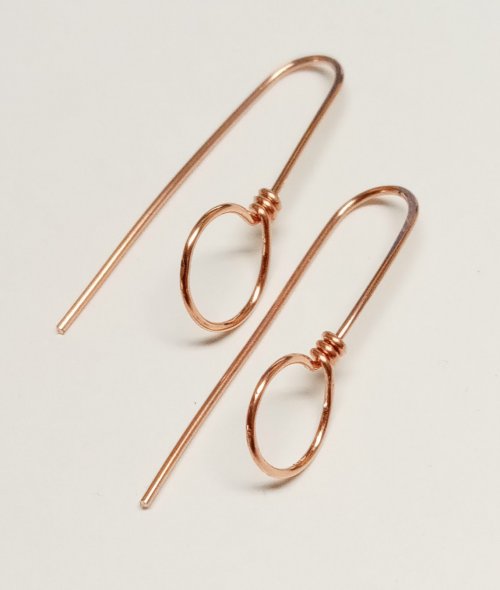 Closed Loop Ear Wires
Closed Loop Ear Wires Simple Strip Bails from Scratch
Simple Strip Bails from Scratch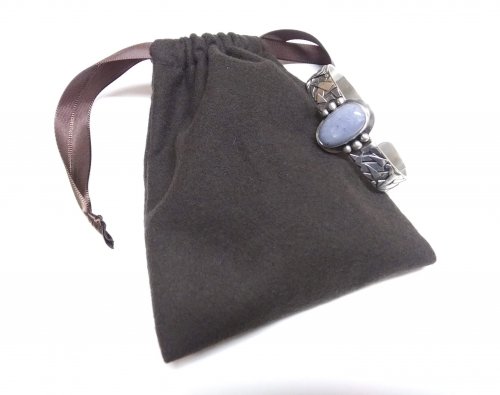 Anti-tarnish Silver Cloth Bags
Anti-tarnish Silver Cloth Bags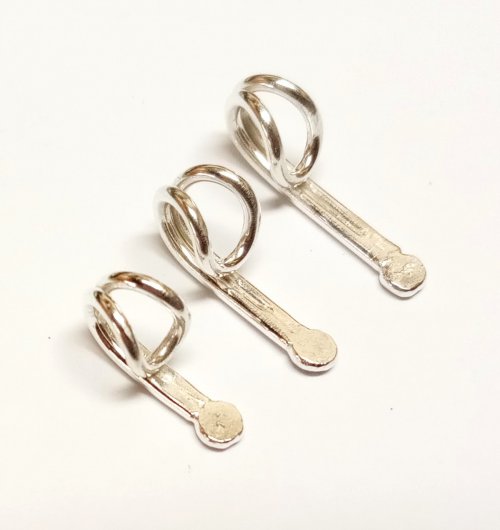 Cotter Pin Style Bail
Cotter Pin Style Bail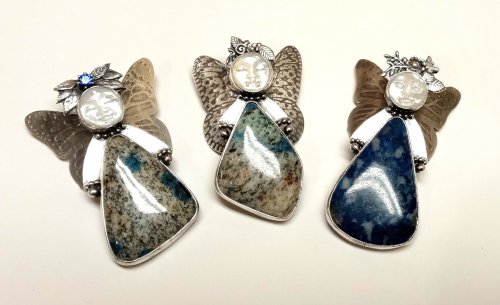 Holiday Woodland Fairy Ornament
Holiday Woodland Fairy Ornament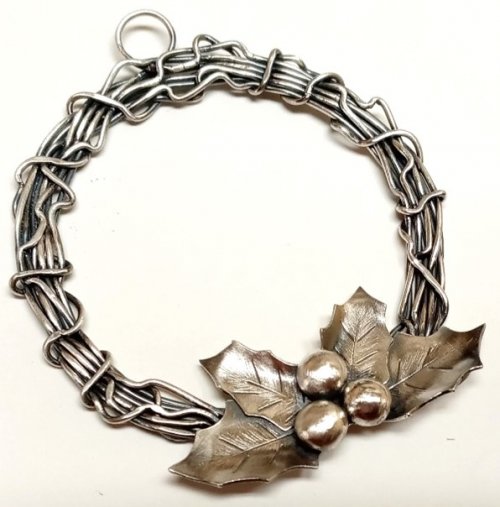 Happy Holly Days Wreath Ornament
Happy Holly Days Wreath Ornament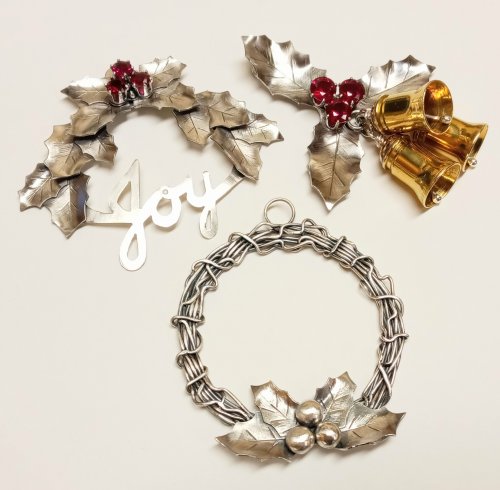 Happy Holly Days Leaves and Berries
Happy Holly Days Leaves and Berries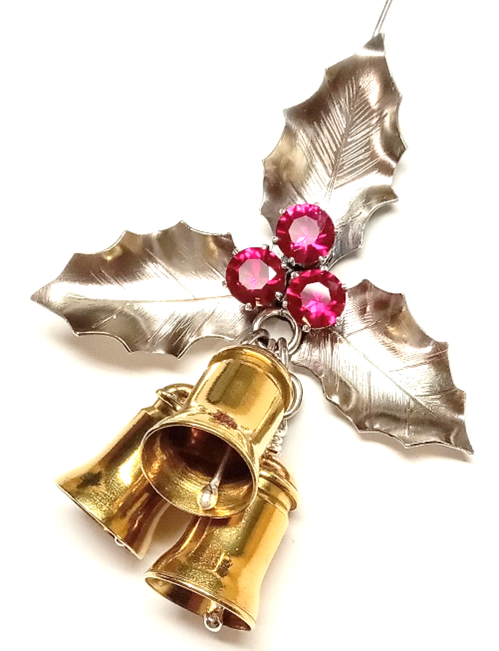 Happy Holly Days Bells Ornament
Happy Holly Days Bells Ornament 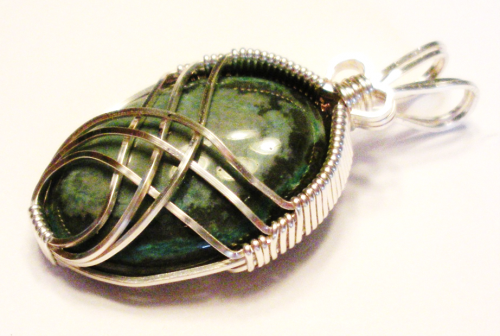 Art Deco Wire Wrapped Pendant
Art Deco Wire Wrapped Pendant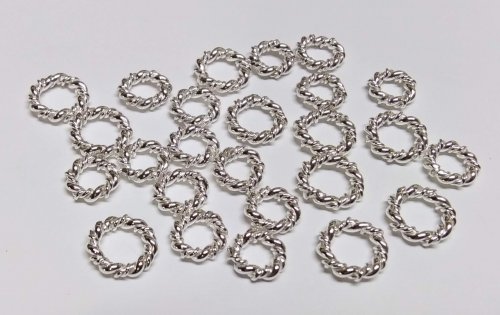 Twisted Wire Jump Rings
Twisted Wire Jump Rings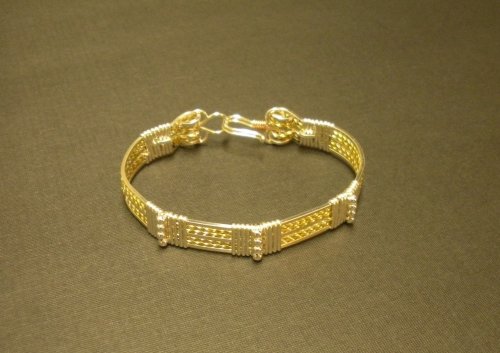 Two-tone Beaded Bangle
Two-tone Beaded Bangle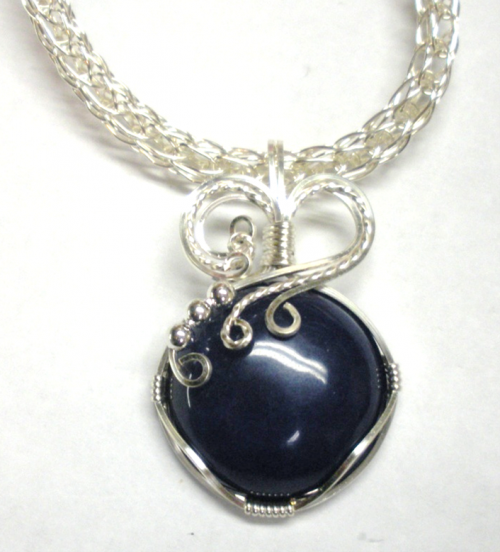 Sweetheart Pendant
Sweetheart Pendant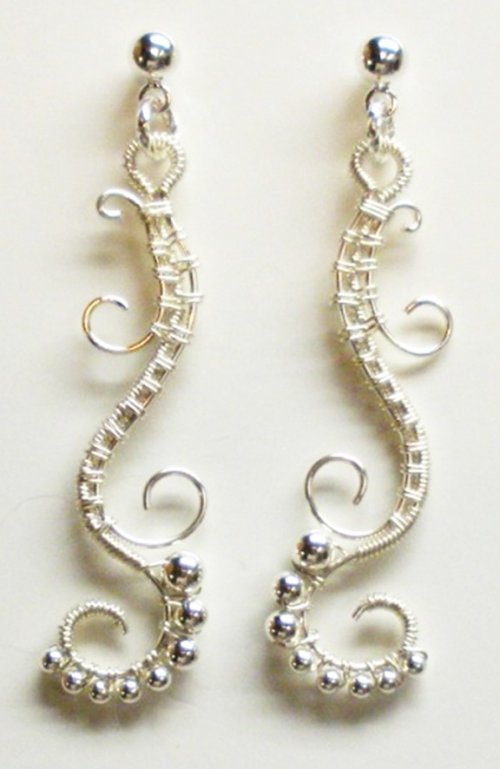 Waves on the Beach Earrings
Waves on the Beach Earrings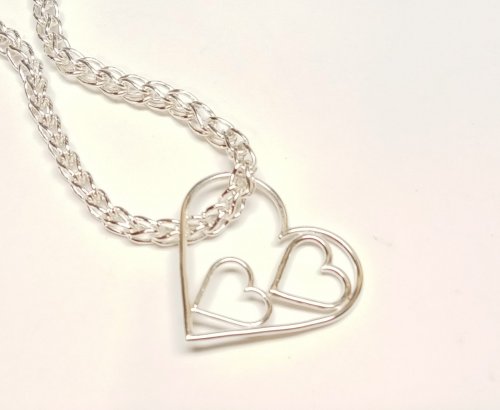 Any Size Wire Hearts - Any Size, Any Gauge
Any Size Wire Hearts - Any Size, Any Gauge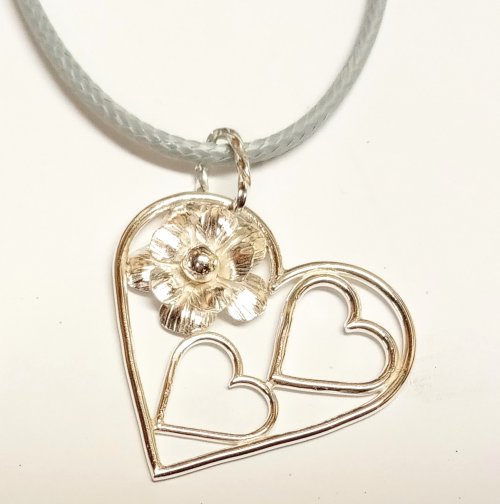 Just in Case Heart Pendant
Just in Case Heart Pendant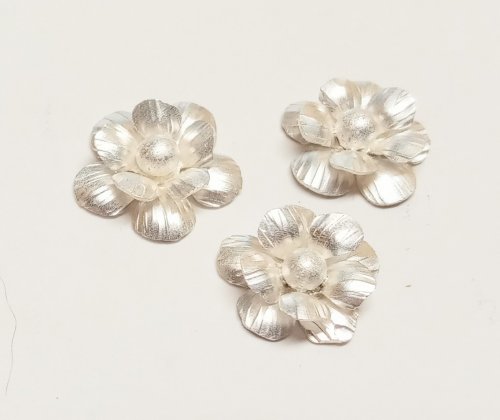 Small Flower Embellishment
Small Flower Embellishment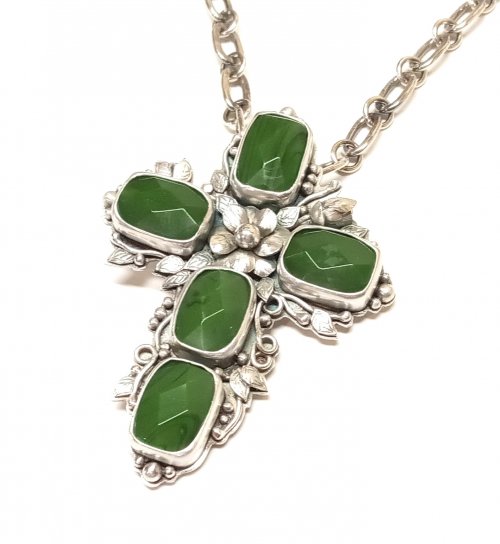 Making Tiny Dapped Metal Leaves
Making Tiny Dapped Metal Leaves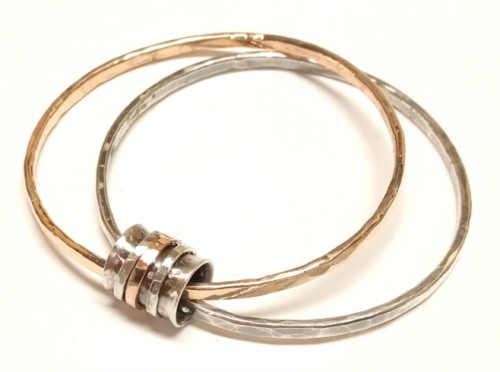 Spinner Fidget Bangles
Spinner Fidget Bangles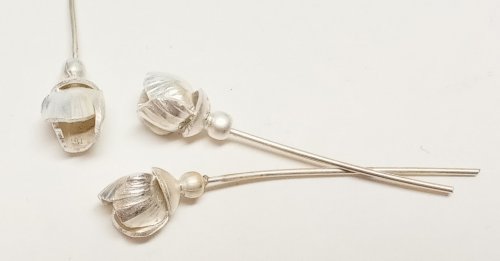 Small Flower Bud Embellishment
Small Flower Bud Embellishment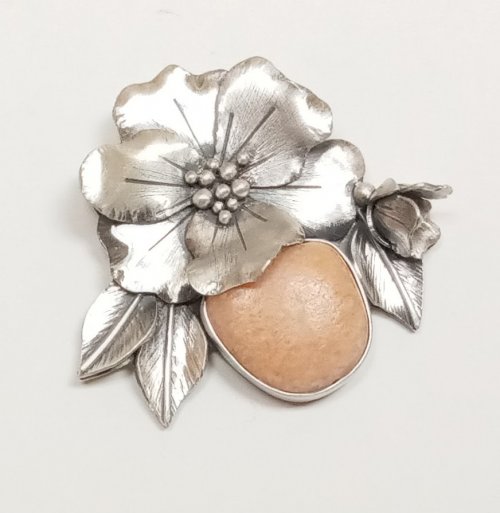 Three Petal Bud and Layered Embellishment
Three Petal Bud and Layered Embellishment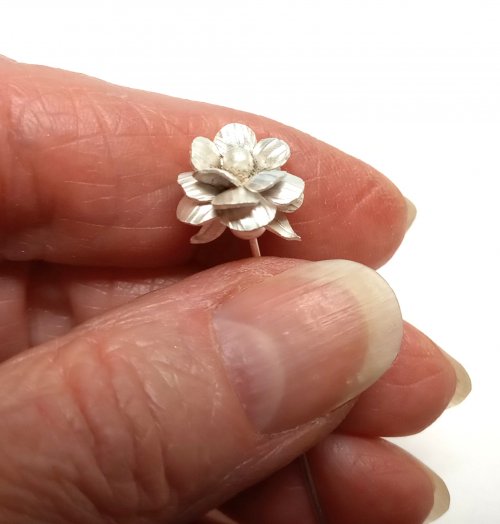 Creating a Flower Stem
Creating a Flower Stem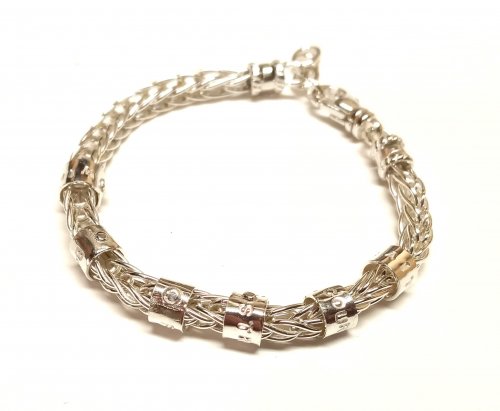 Stamped Tube Beads
Stamped Tube Beads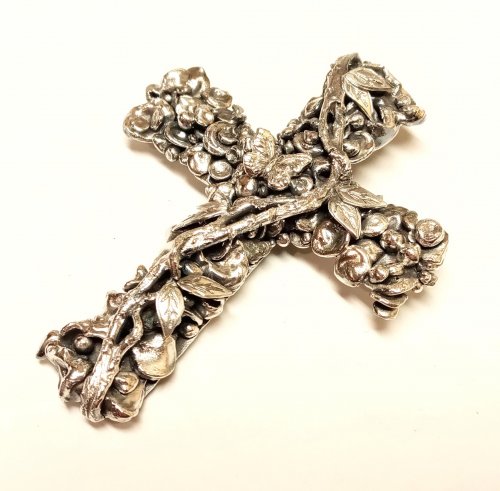 Water Cast Scrap Cross
Water Cast Scrap Cross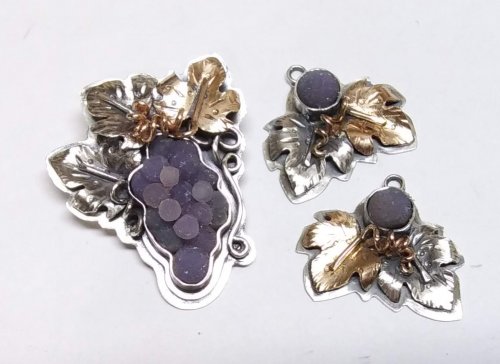 Sugared Grapes Pendant
Sugared Grapes Pendant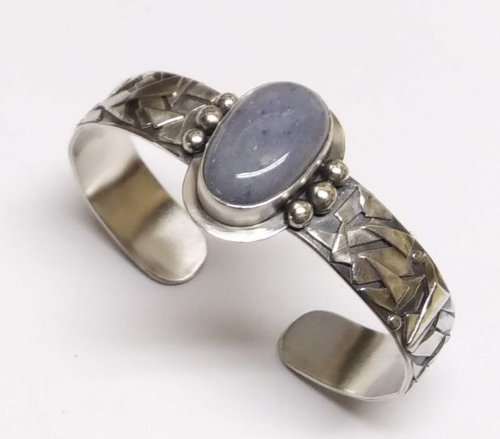 Tourist Rock Cuff Bracelet
Tourist Rock Cuff Bracelet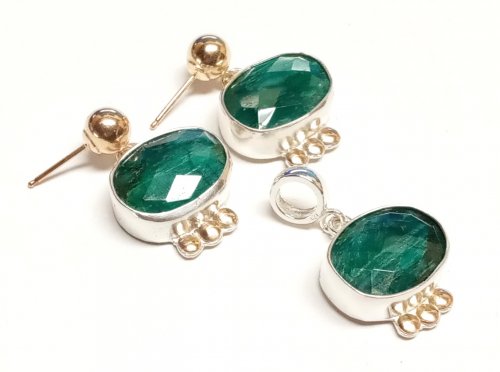 Gemstone Chains Reimagined
Gemstone Chains Reimagined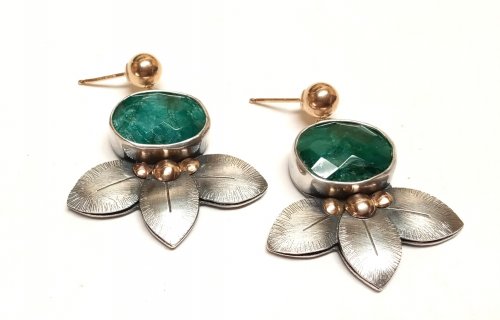 Checkerboard Faceted Earrings
Checkerboard Faceted Earrings Foxtail Chain aka Loop-in-Loop
Foxtail Chain aka Loop-in-Loop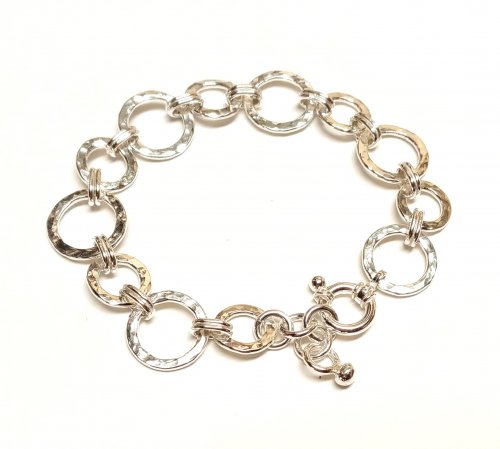 Handmade Chunky Chain
Handmade Chunky Chain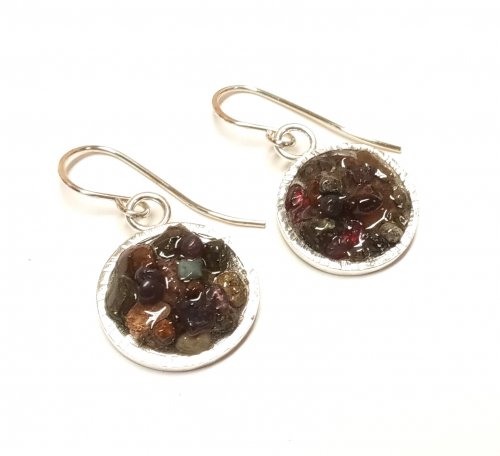 Capture a Summer Memory
Capture a Summer Memory Stone Key Fob
Stone Key Fob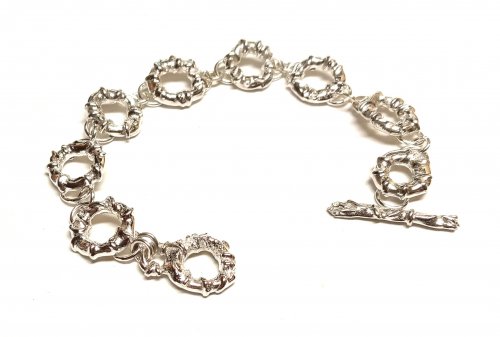 Sprinkles Link
Sprinkles Link
